Each day in Morocco has been full of different perspectives. We see the massive disparity between rich and poor, the many differences between Arab and Black Africa, Moroccans interacting with the many visiting people, old vs new architecture and ways of living.. the list goes on. Of the place we’ve been on this trip, Marrakech demonstrates all of these the most potently.
We spent today in the Atlas Mountains visiting the indigenous people of the area that pre-date the Arabs, the Amazigh (they are commonly referred to Berber, but this is apparently offensive to some as it’s a name that was assigned by the Greeks). We hired a driver to take us around, which has proven to be very convenient and even cost-effective for the four of us over the course of a day. Kudos to Raida (sp?) for his patience and guidance all day, and his friends who he partners with for various sites.
But first.. we started with a simple breakfast in our riad.
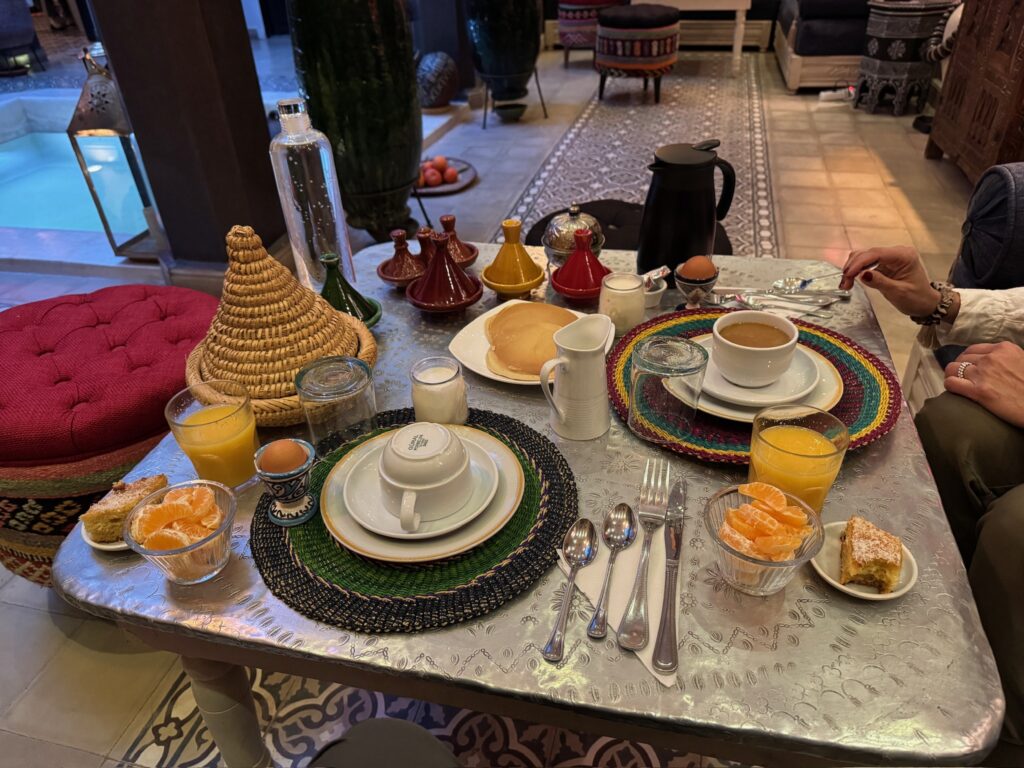
This riad has a great collection of art, and lighting that matches it well.
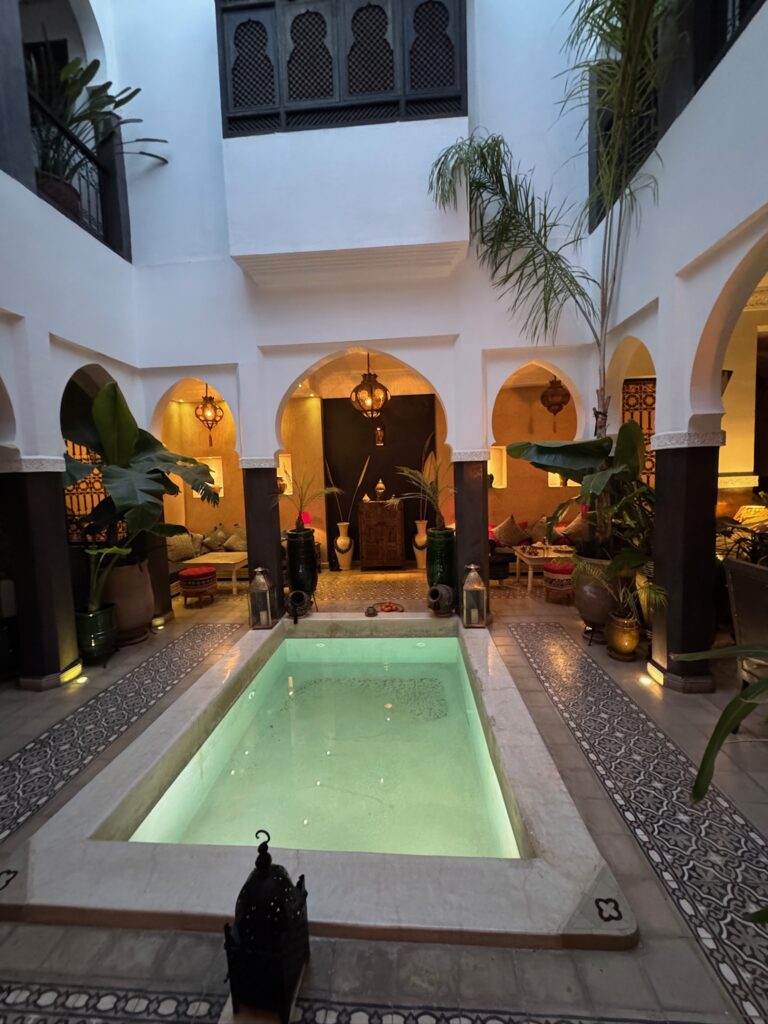
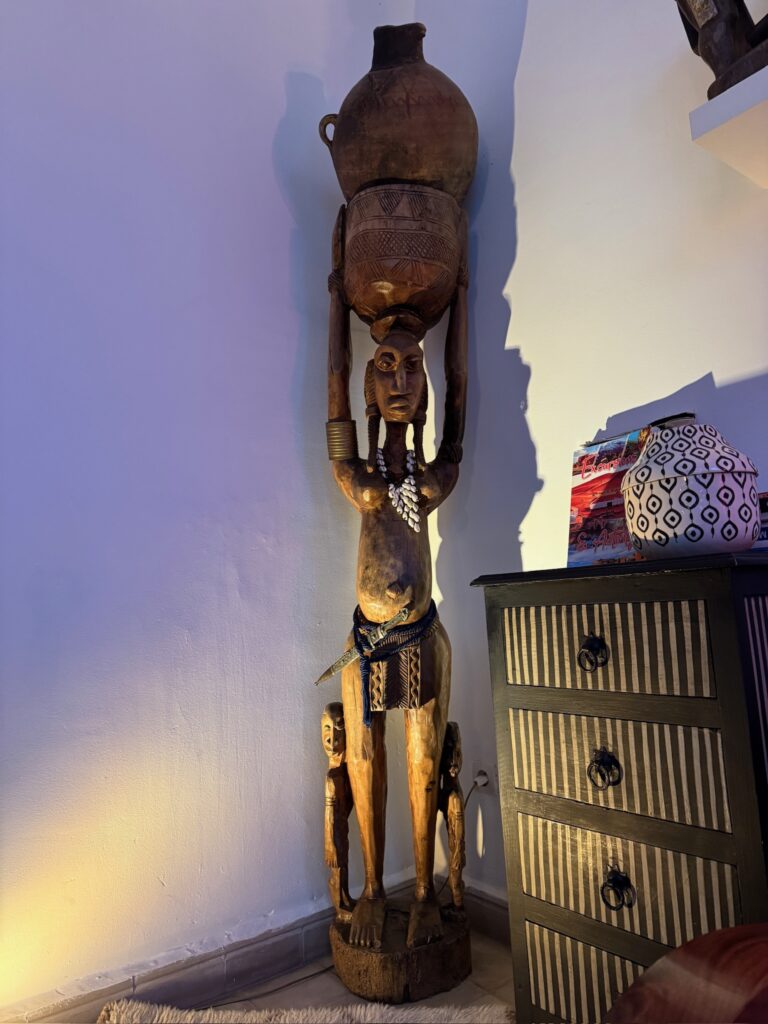
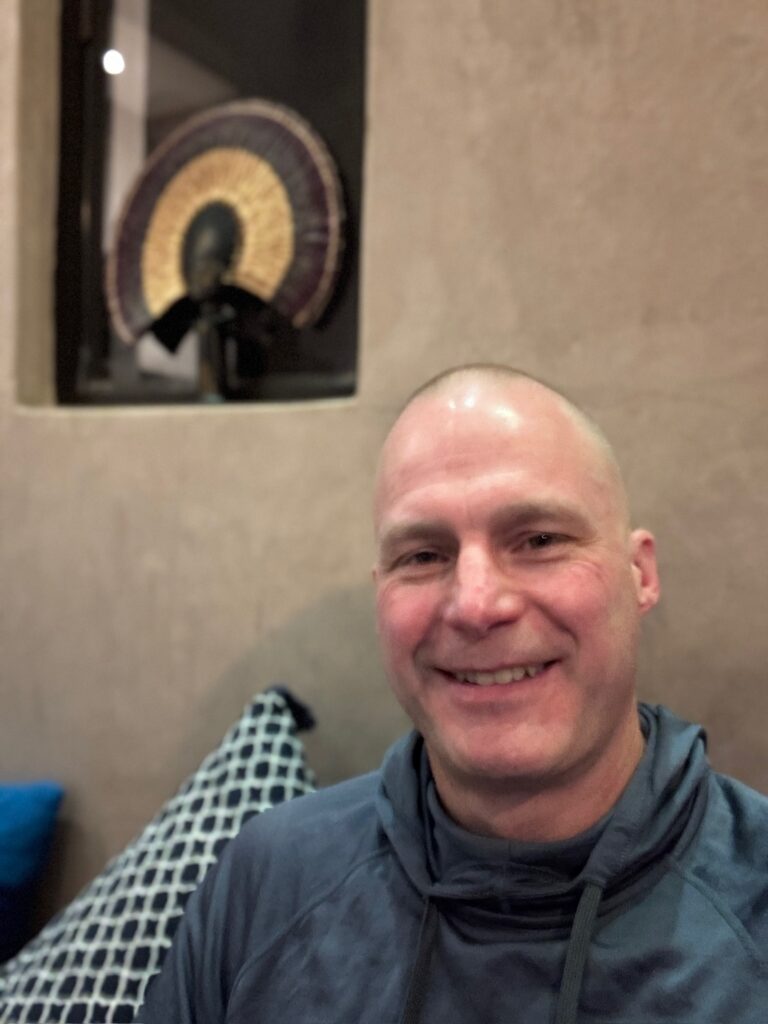
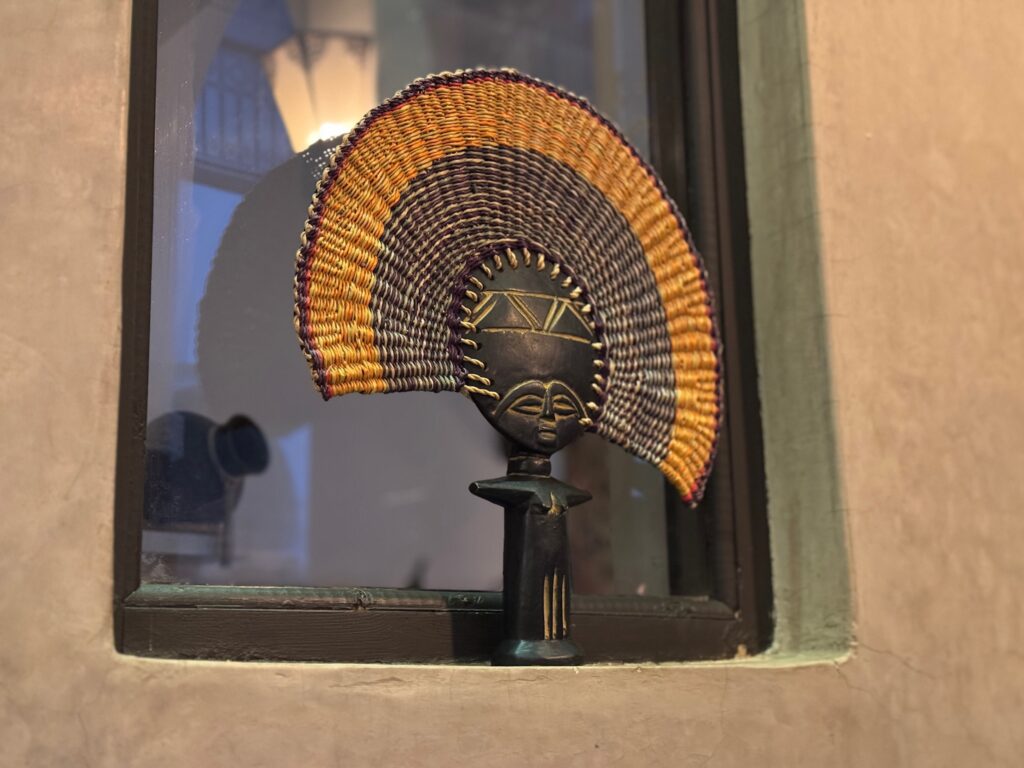
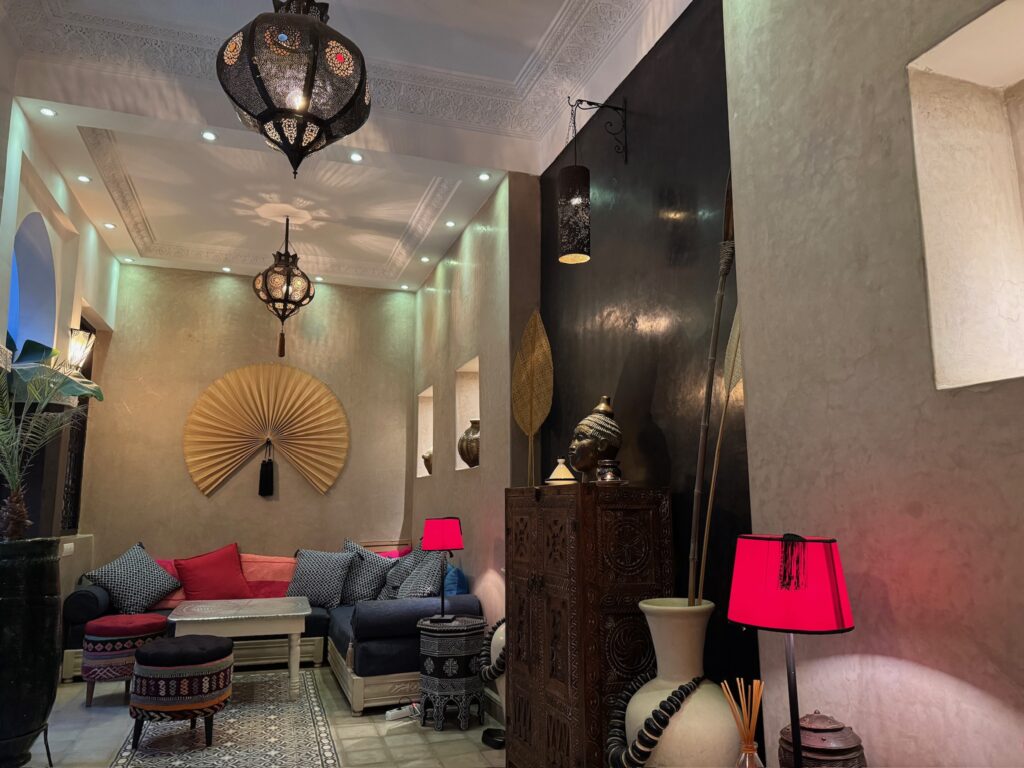
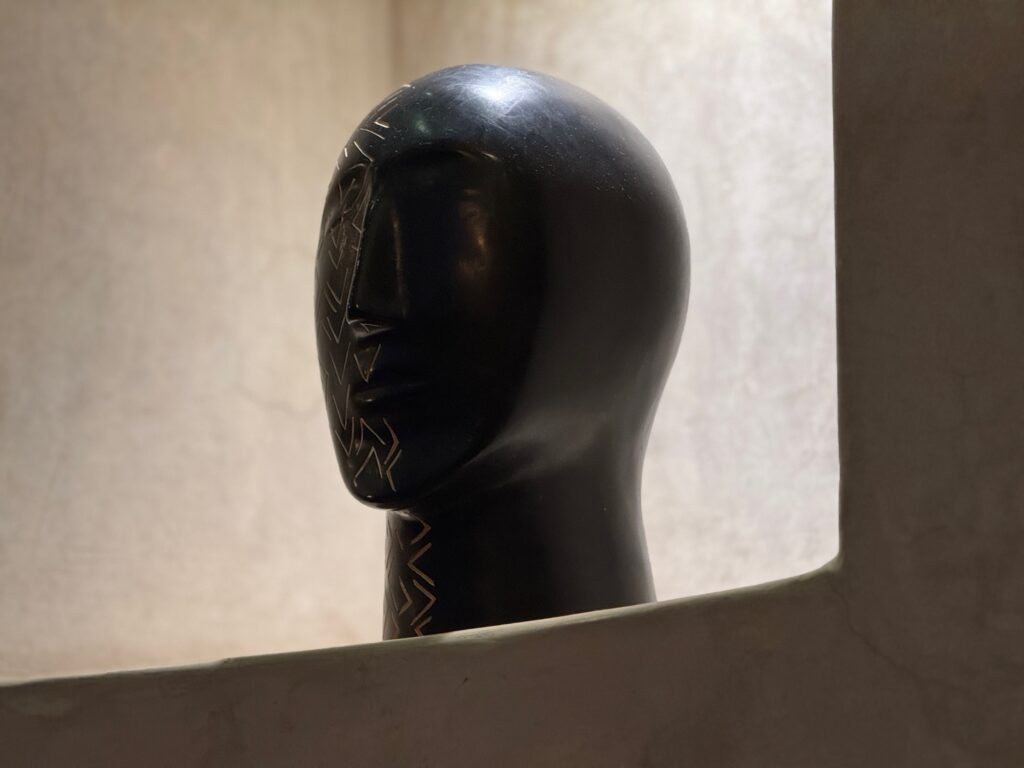
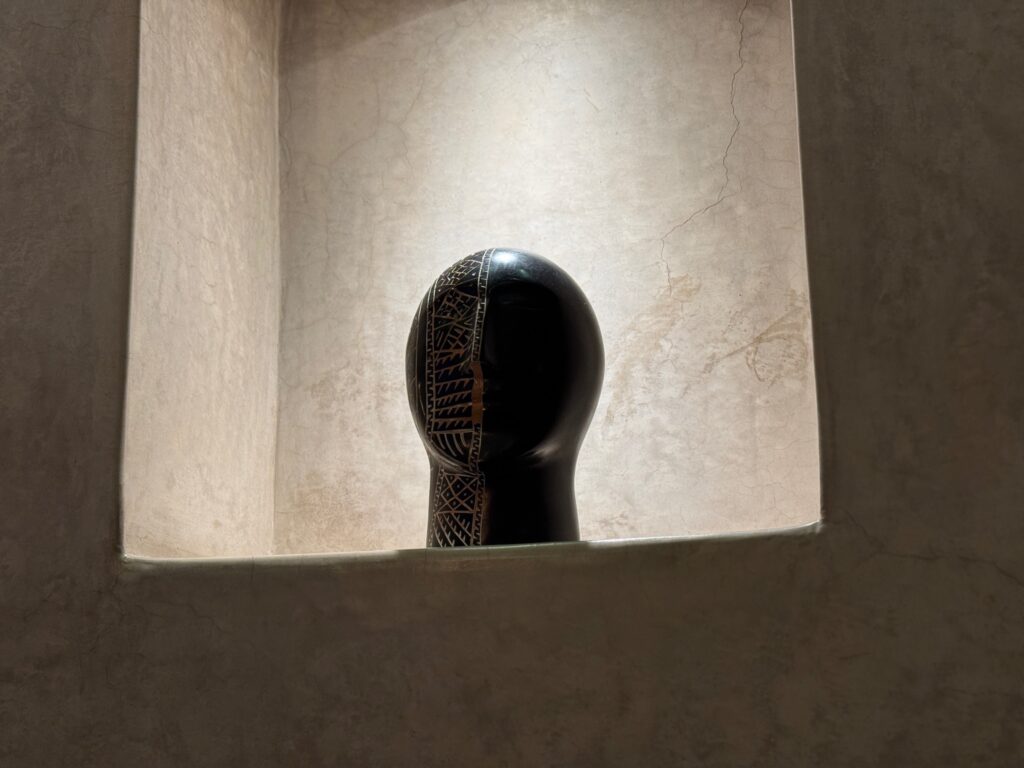
Today was also the day for a large marathon in Marrakech, so we left early and via a route unaffected by the running route. 15 minutes later we were in the plains surrounding Marrakech and watching the Atlas Mountains slowly grow in the distance.

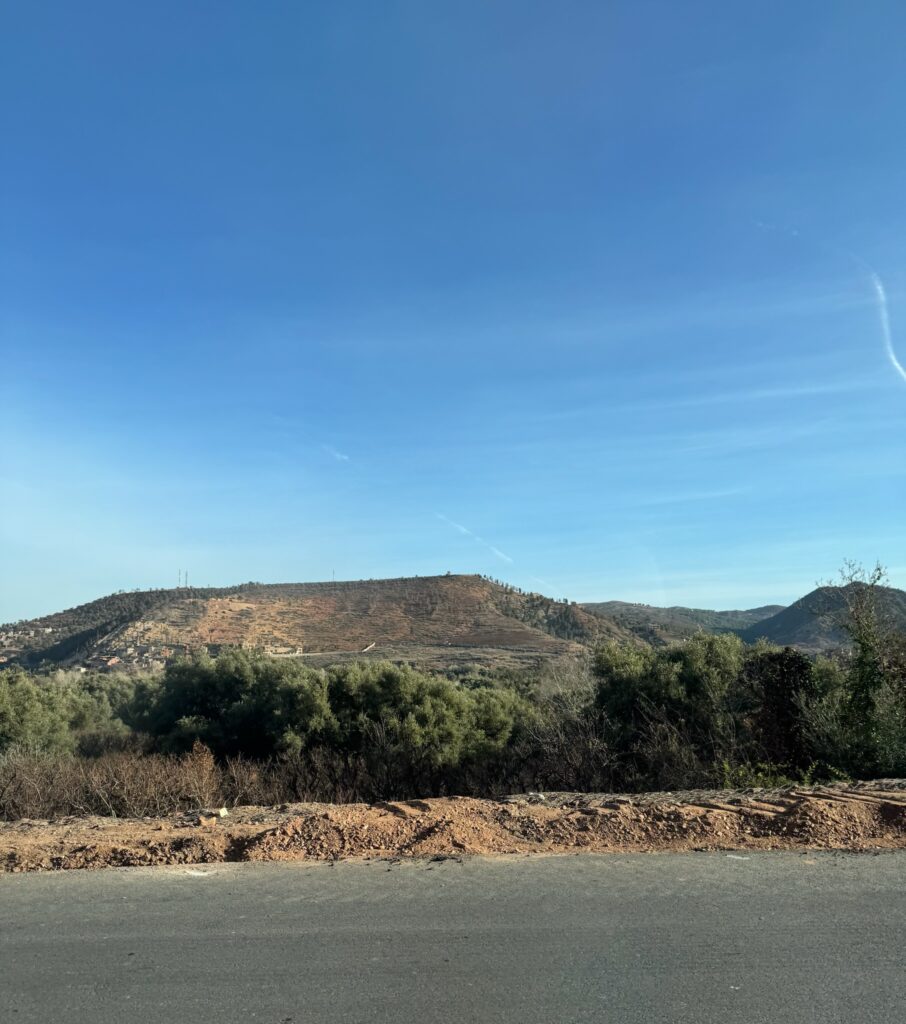
Once we were up in the lower mountains (1000m elevation vs Marrakech at ~466m), among the Amazigh villages, we stopped at a large rug shop. This is a famous craft for the Amazigh people, as well as the nomadic Tuareg tribes that are found in Morocco and several neighboring countries. Individual cultures, villages, and craftspeople vary widely as far as style & materials, and this shop had them all. The owner, Abdou, walked us through the three floors of rugs, as well as a small terrace on top of a viewing tower of sorts. His family has lived in the same village selling rugs for over 300 years! His house, as well as remnants of its previous incarnations, were visible just across the road from the shop. He proudly told us the history and geography of it all and detailed the roles of men vs women in work distribution. He emphasized that men did the hard work and women made rugs as a hobby. Kind of an odd point given how much they charge..
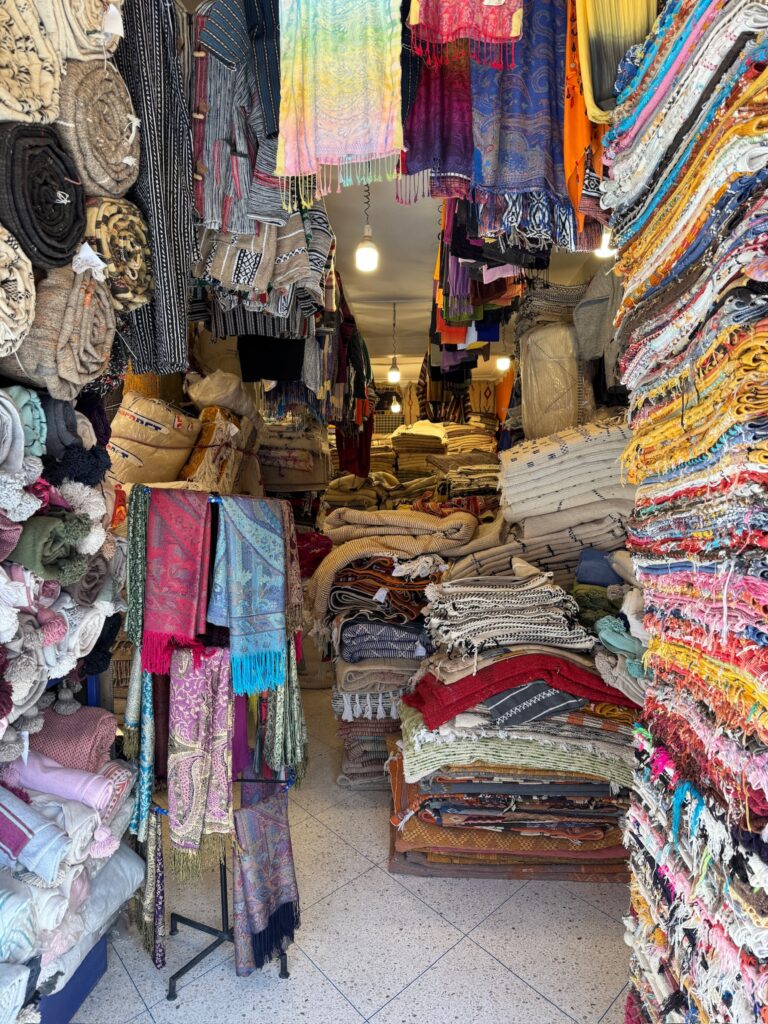
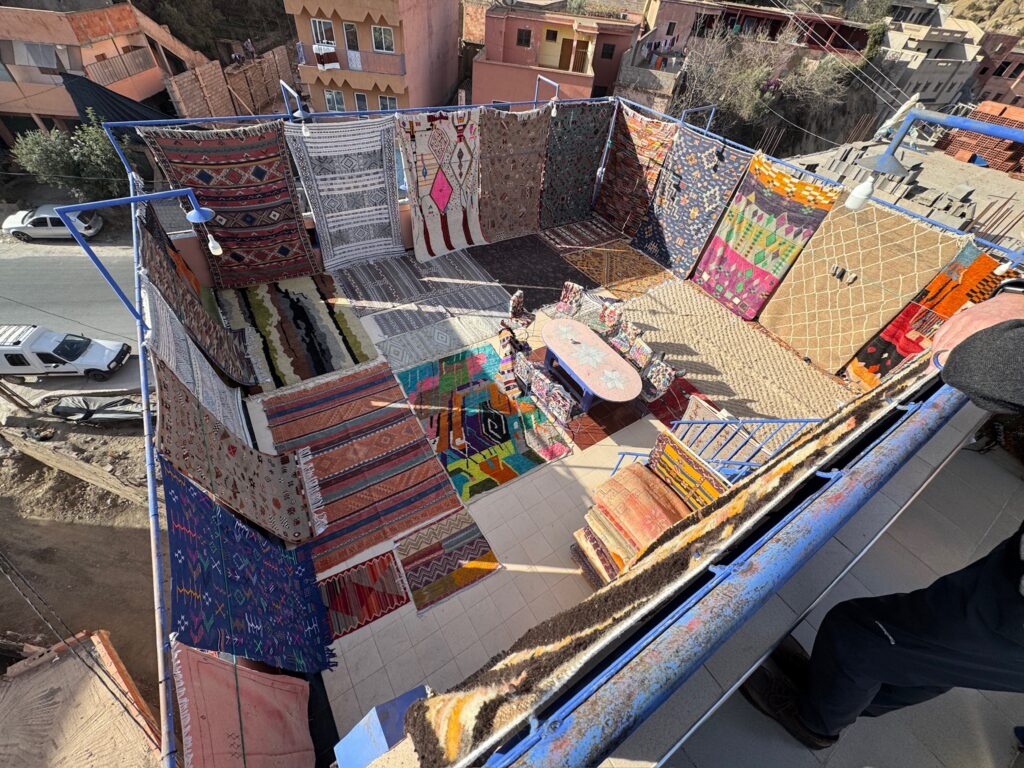
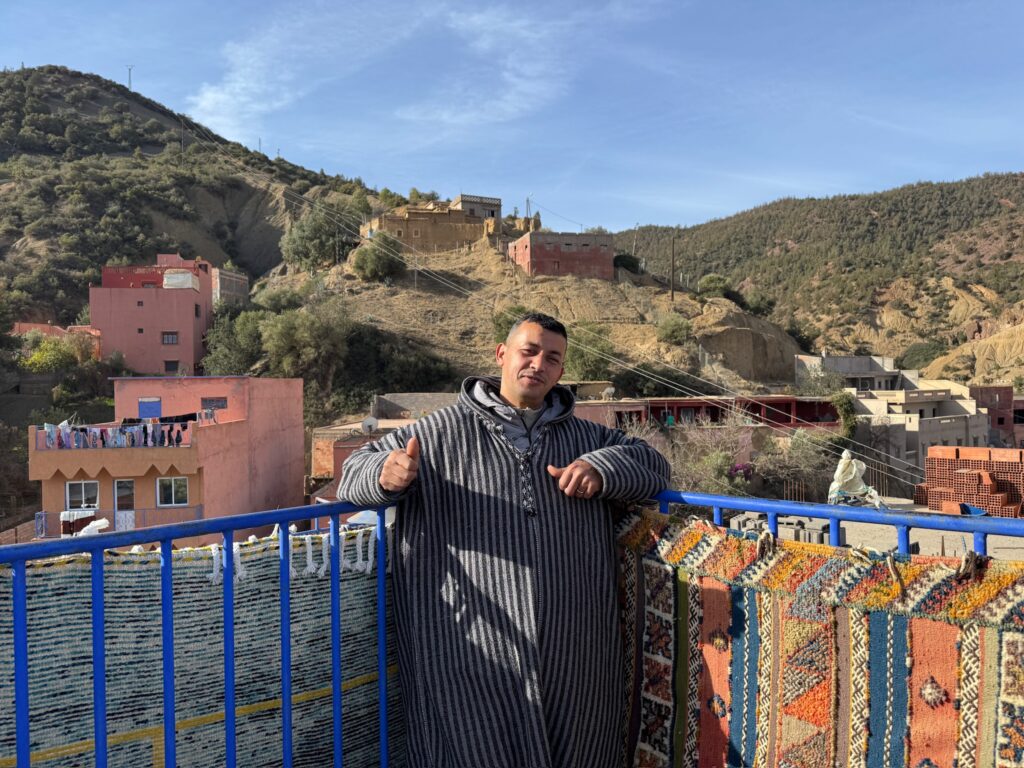
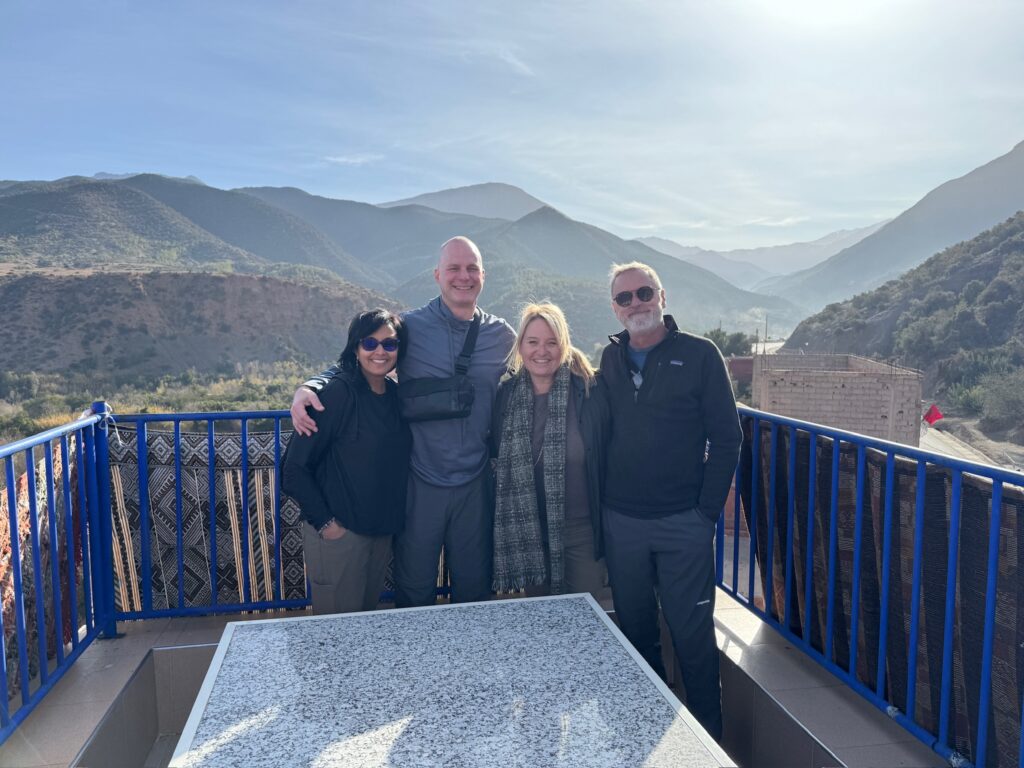

Views from the rooftop..
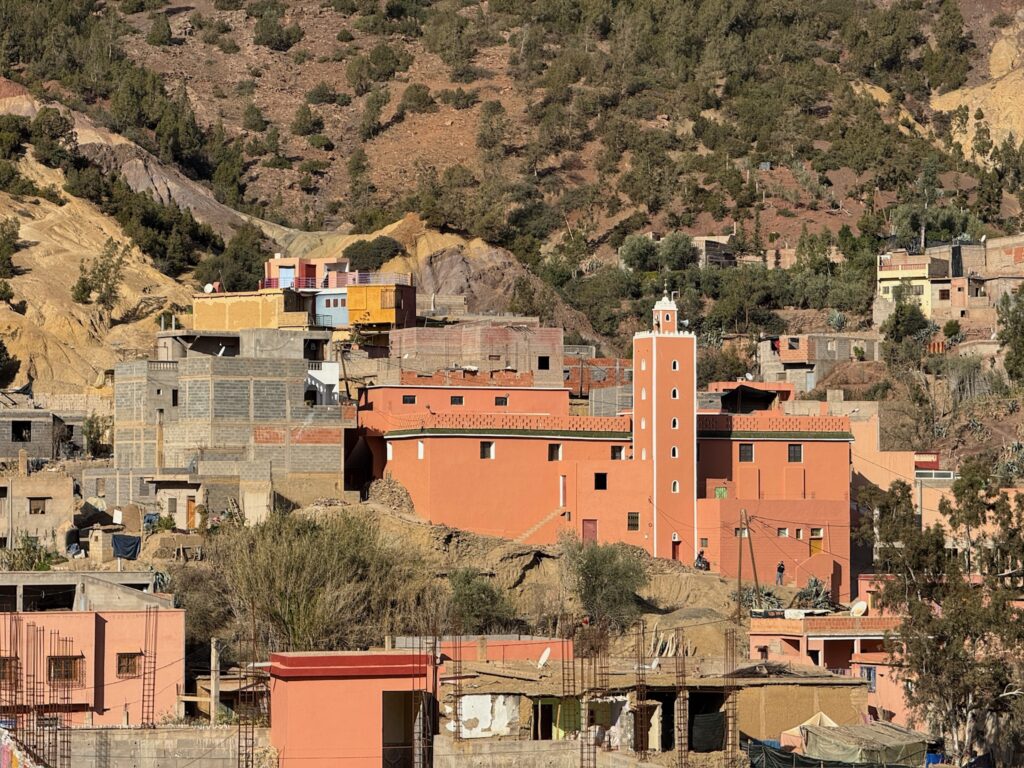
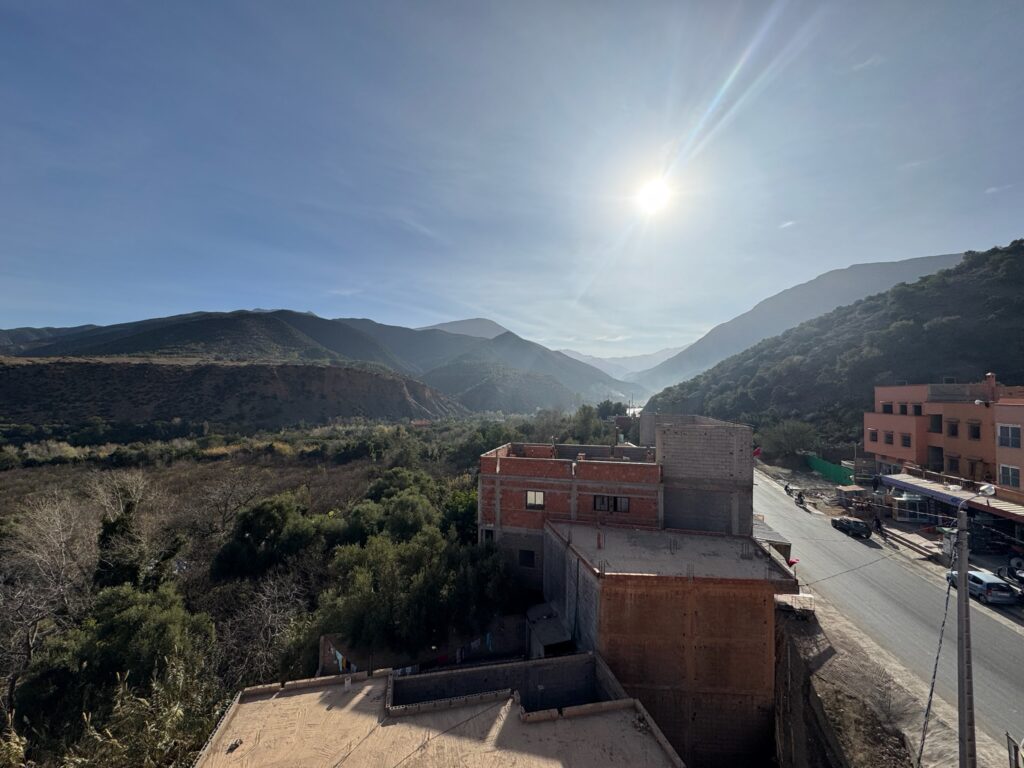
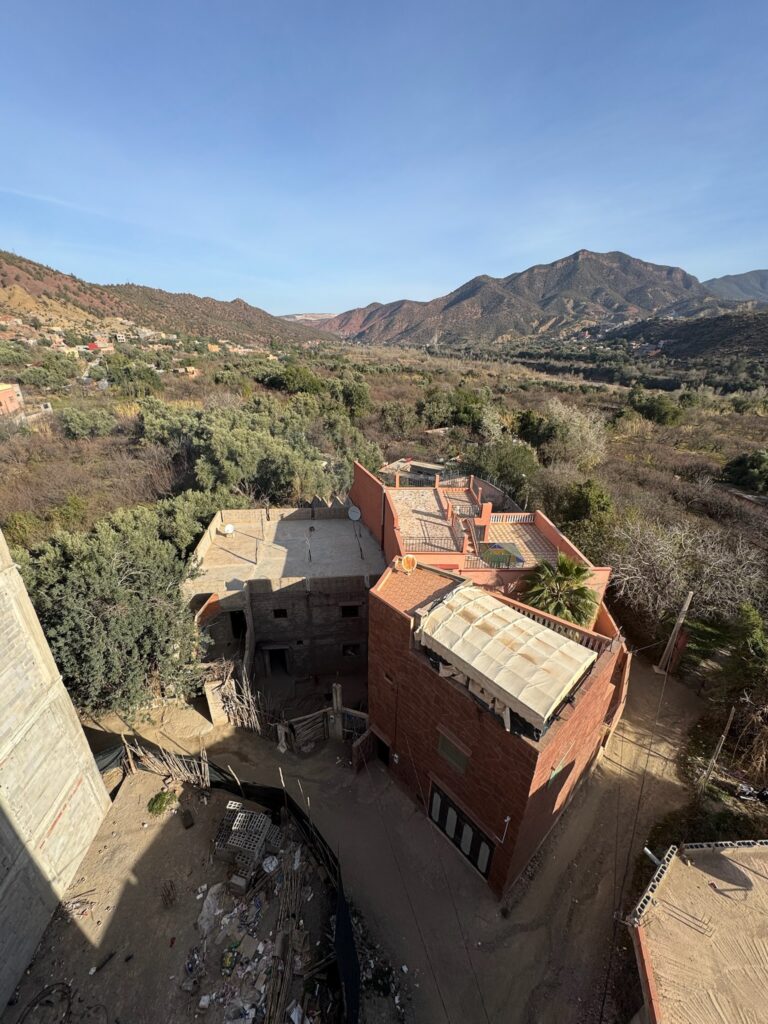
Abdou is of course also a salesman though, so he prepared us tea and snacks and chairs and presented rug after rug until we fell in love with something. Crafty indeed.
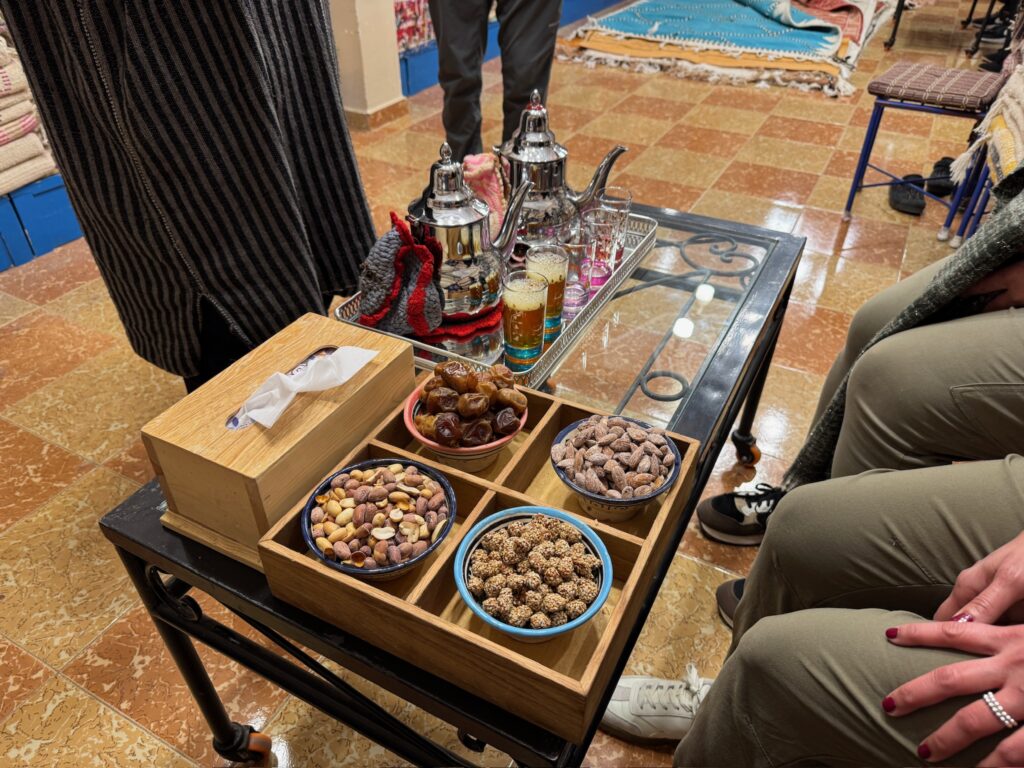
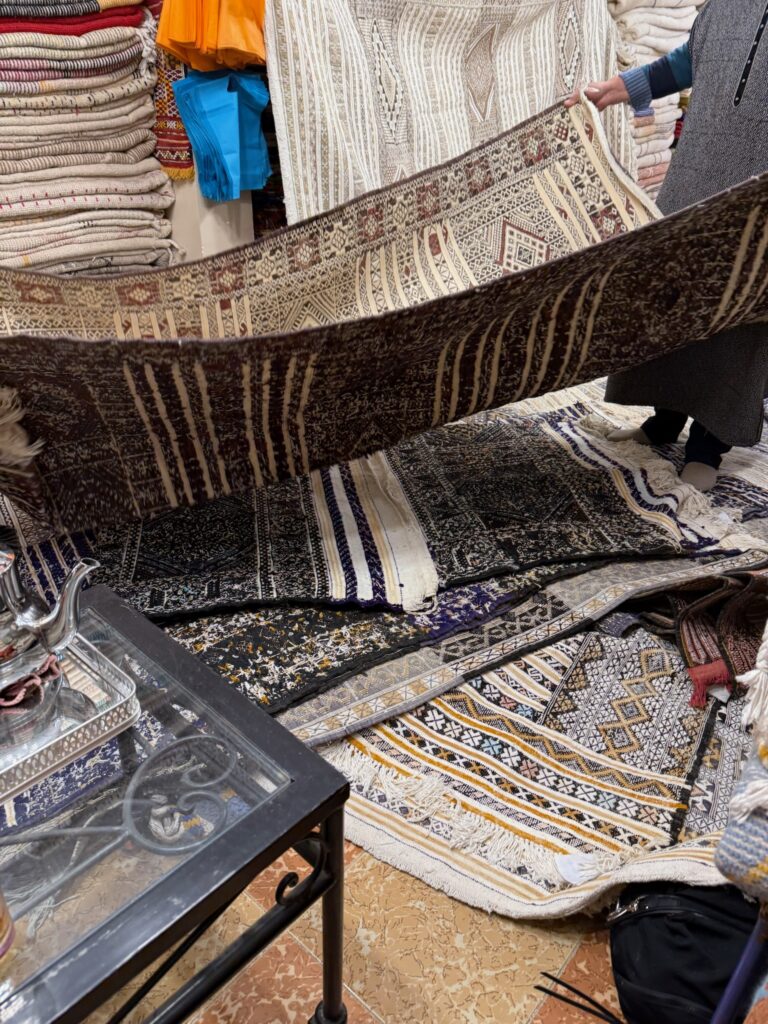
Savitri and Jen really got into finding the perfect rug for certain locations and existing colors and themes.
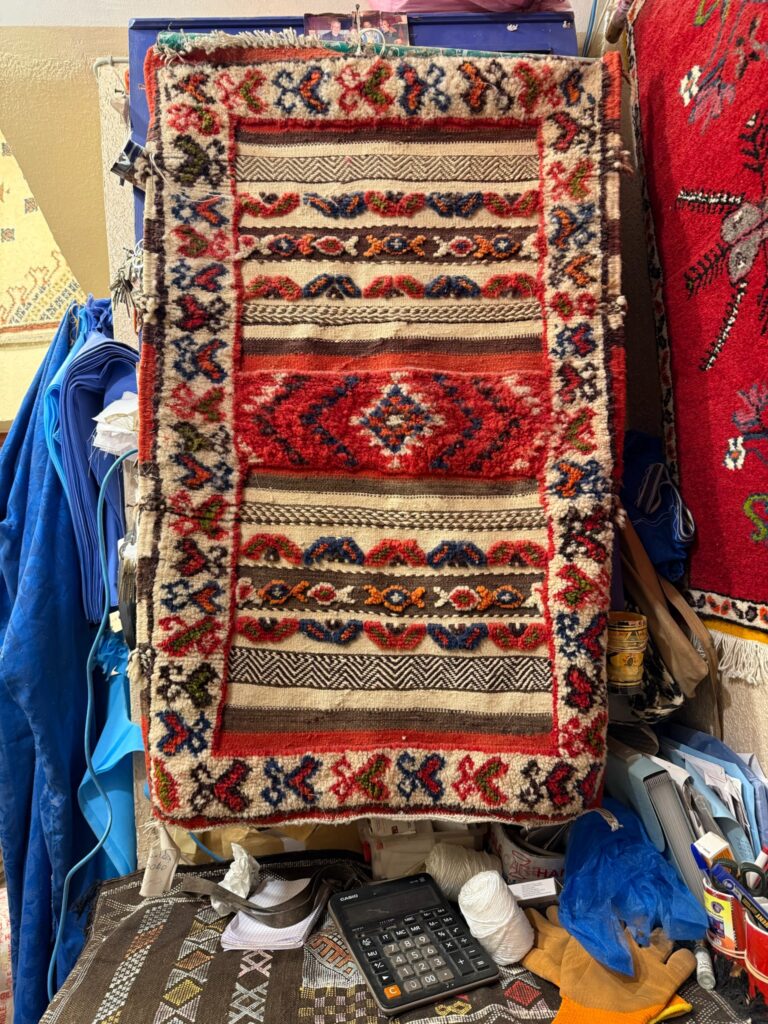
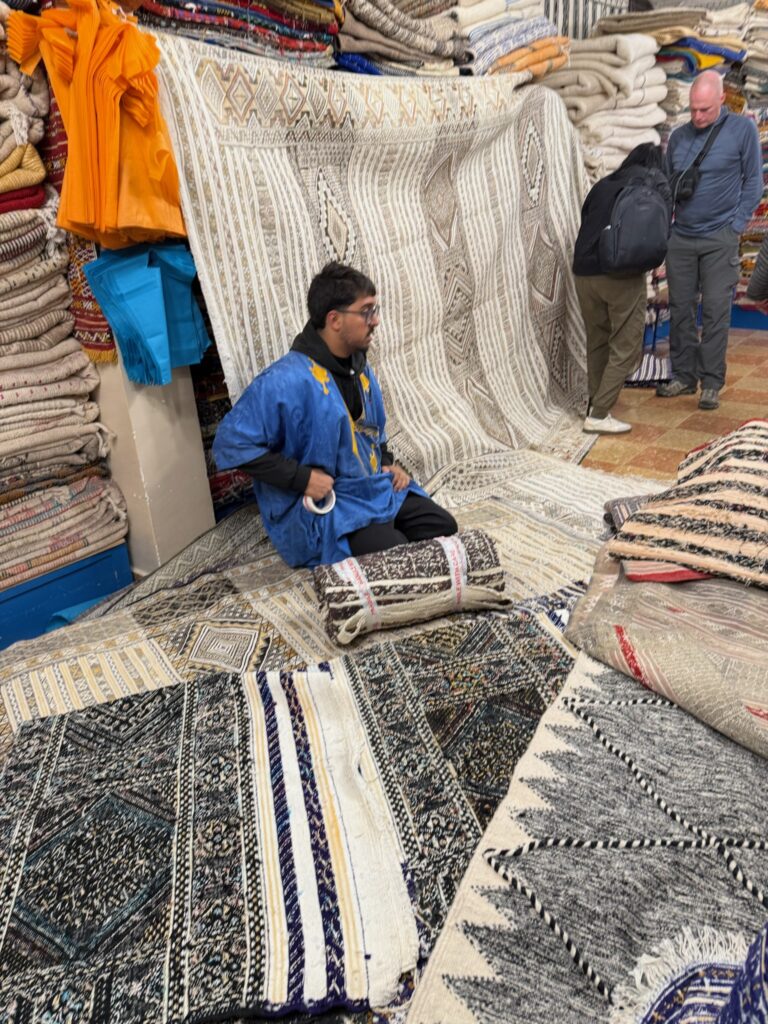
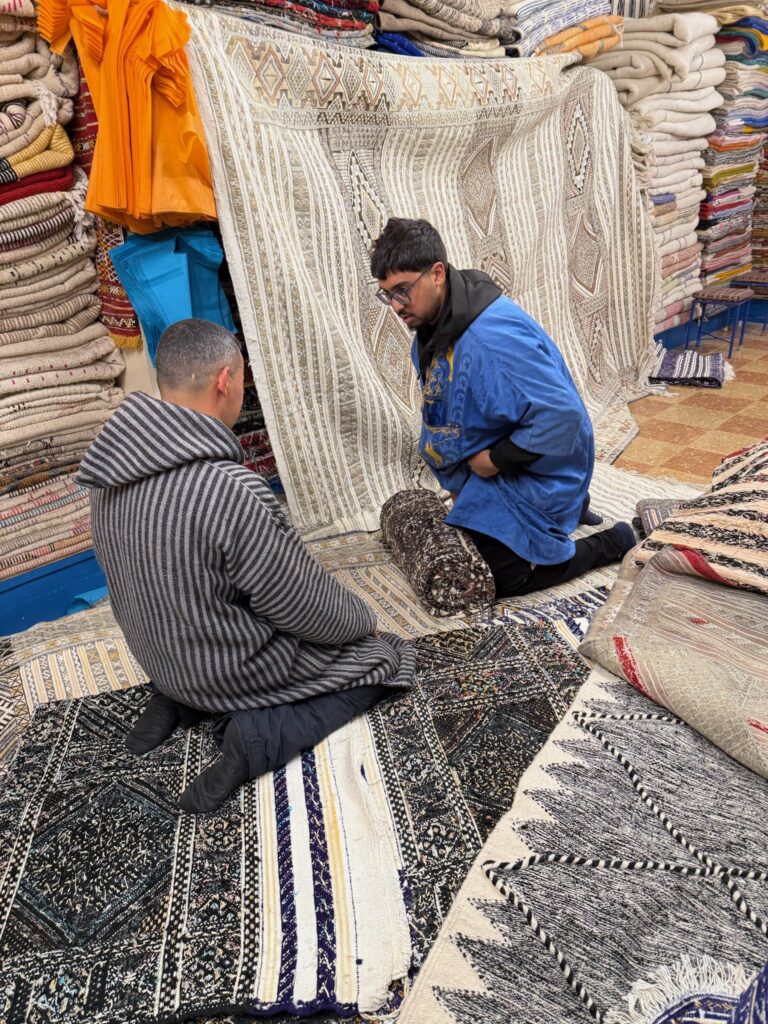
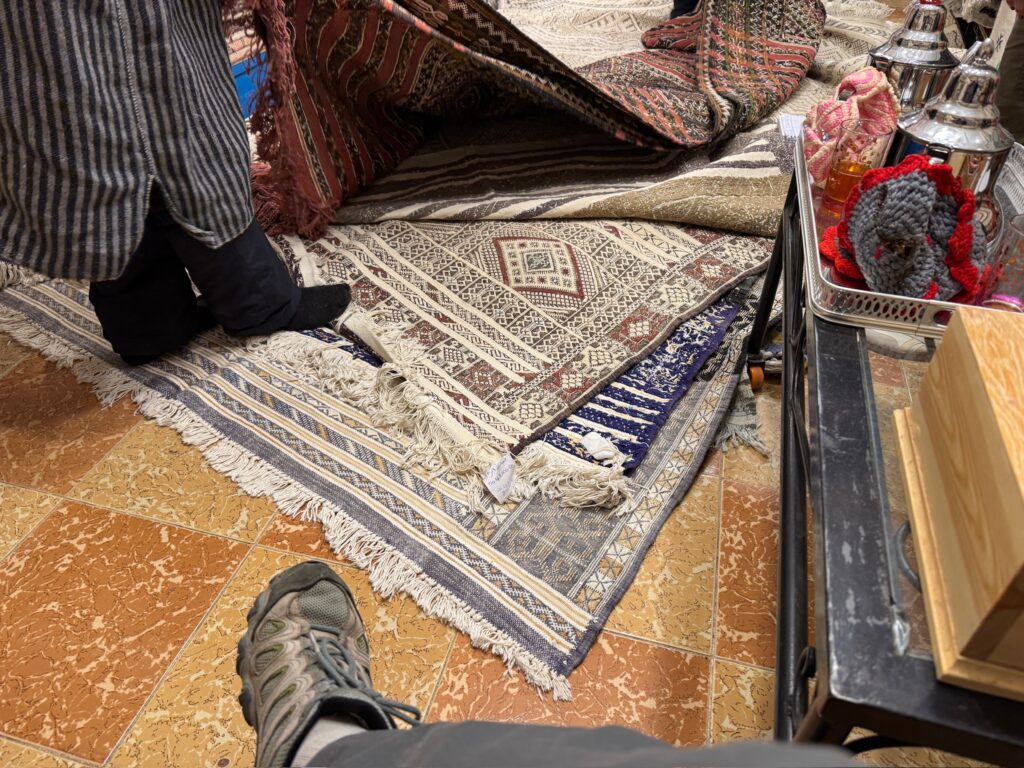
Our next stop was Sitti Fatma, the second-to-last village in the Ourika Valley we were driving up. Raida handed us off to a local guide, Omar, to take us on a short hike through the village and up to a waterfall above the village. This is a heavily trafficked route, so much so that there are permanent gift shops along many parts of it. Still it was nice to get a little exercise, to get the vantage point looking down on the beautiful village and valley, and to mingle with other tourists from around the world.
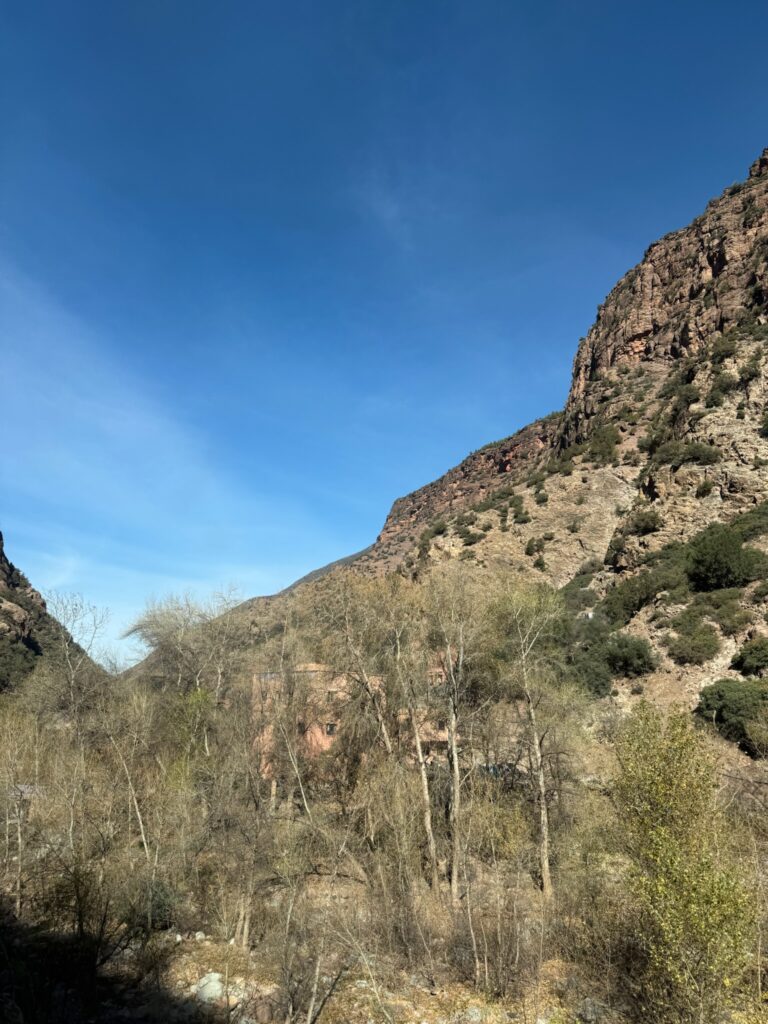

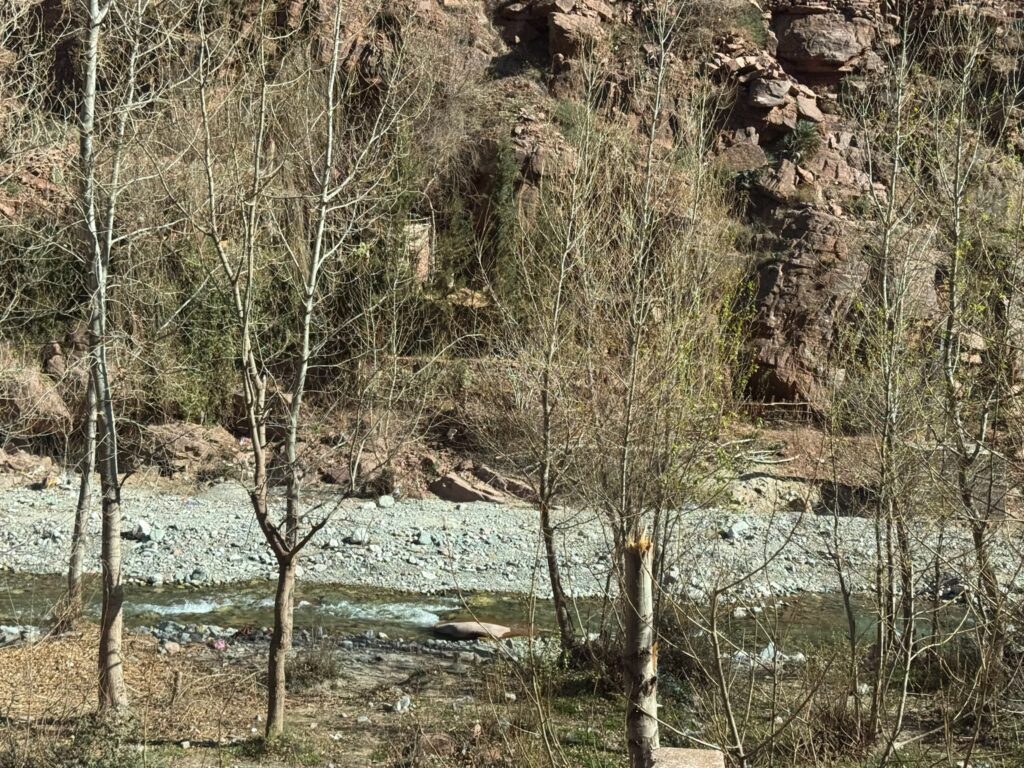
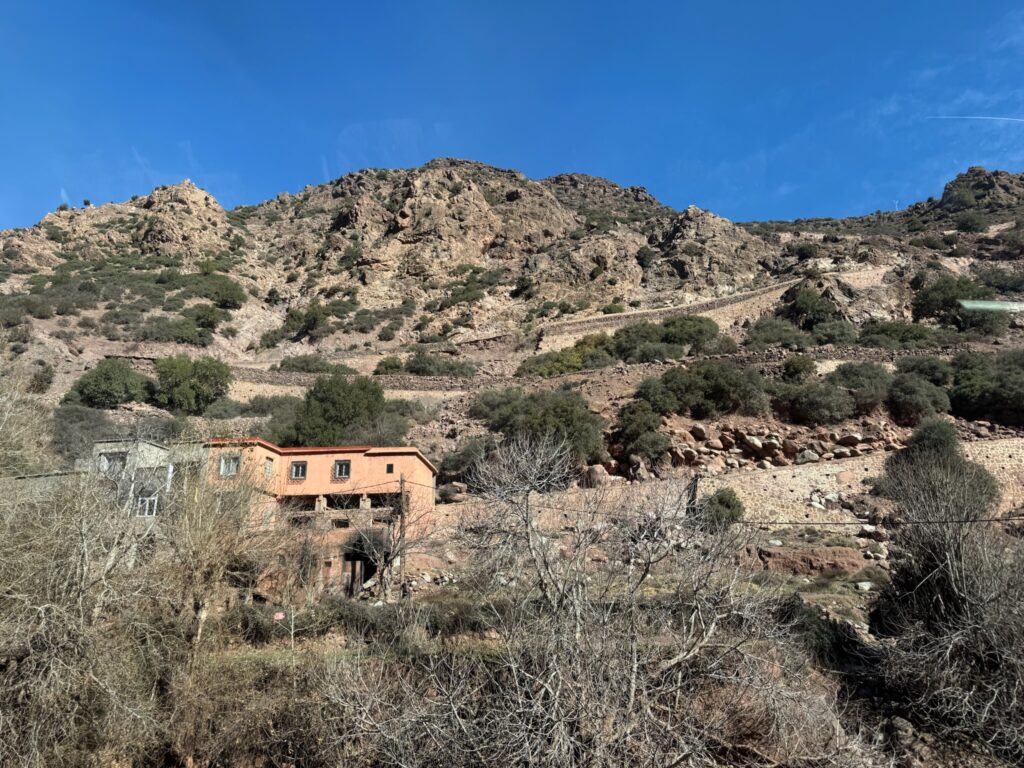
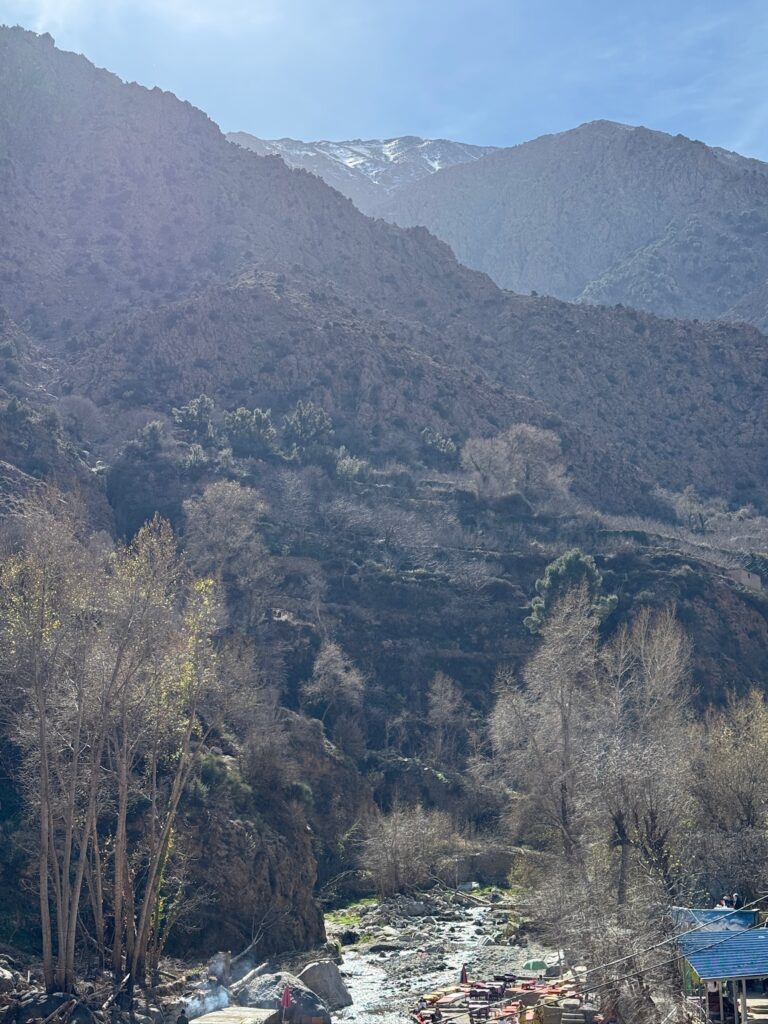
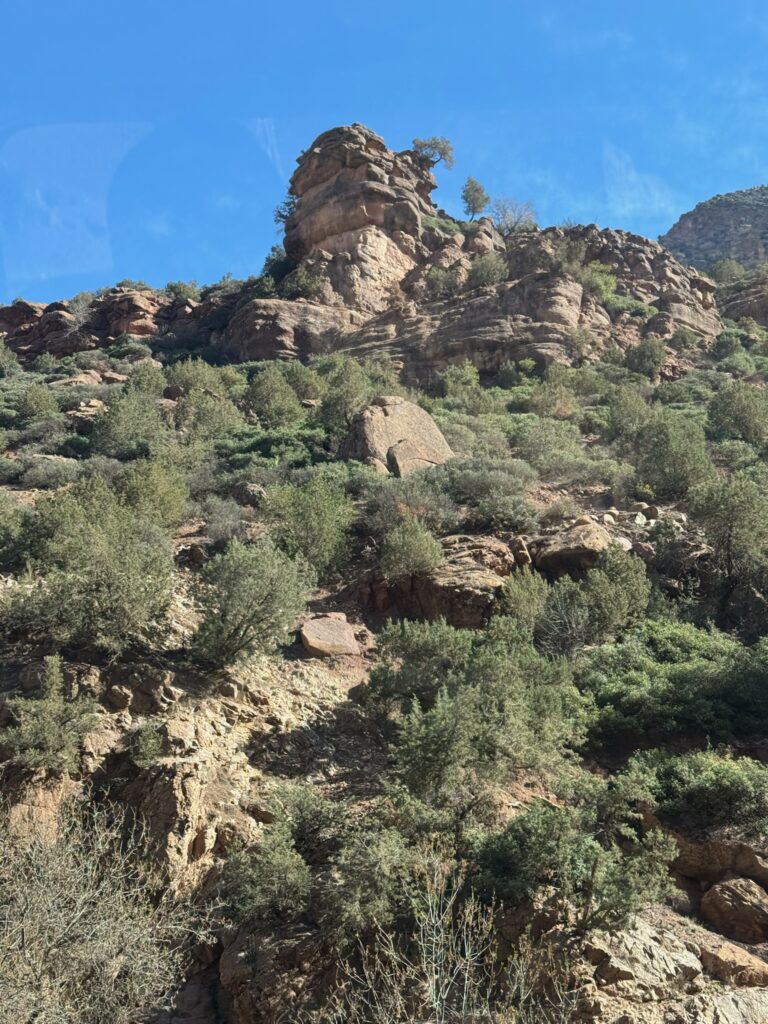
There are wild monkeys in this area, the same type that we saw in the market in Marrakech the previous night.

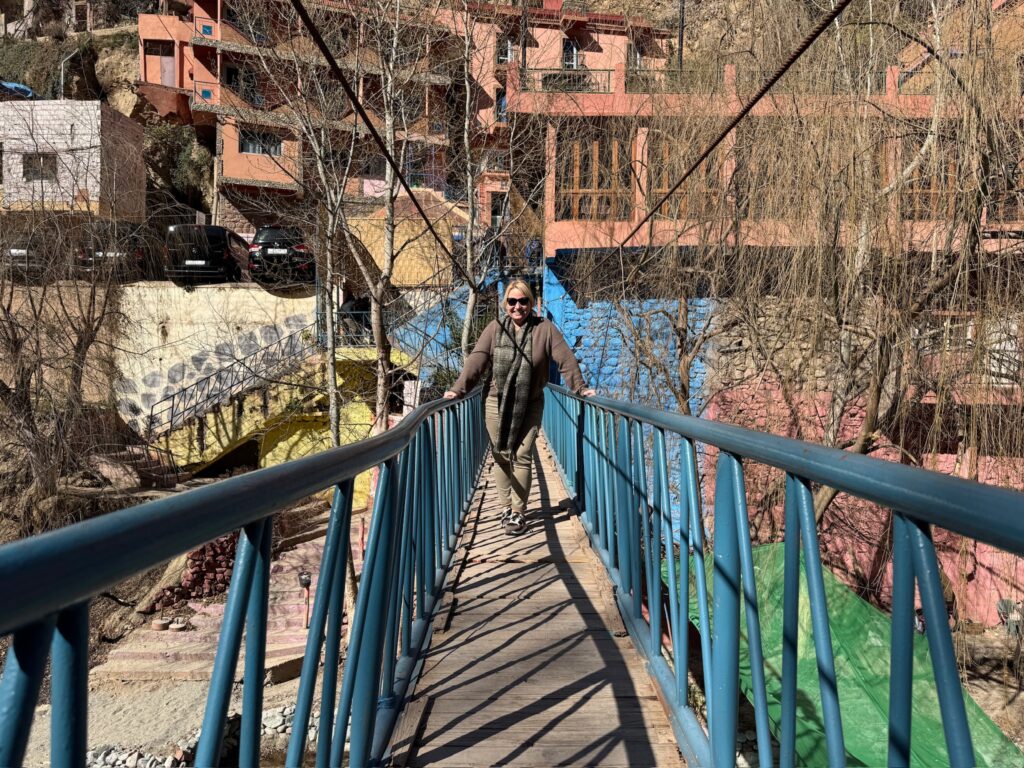
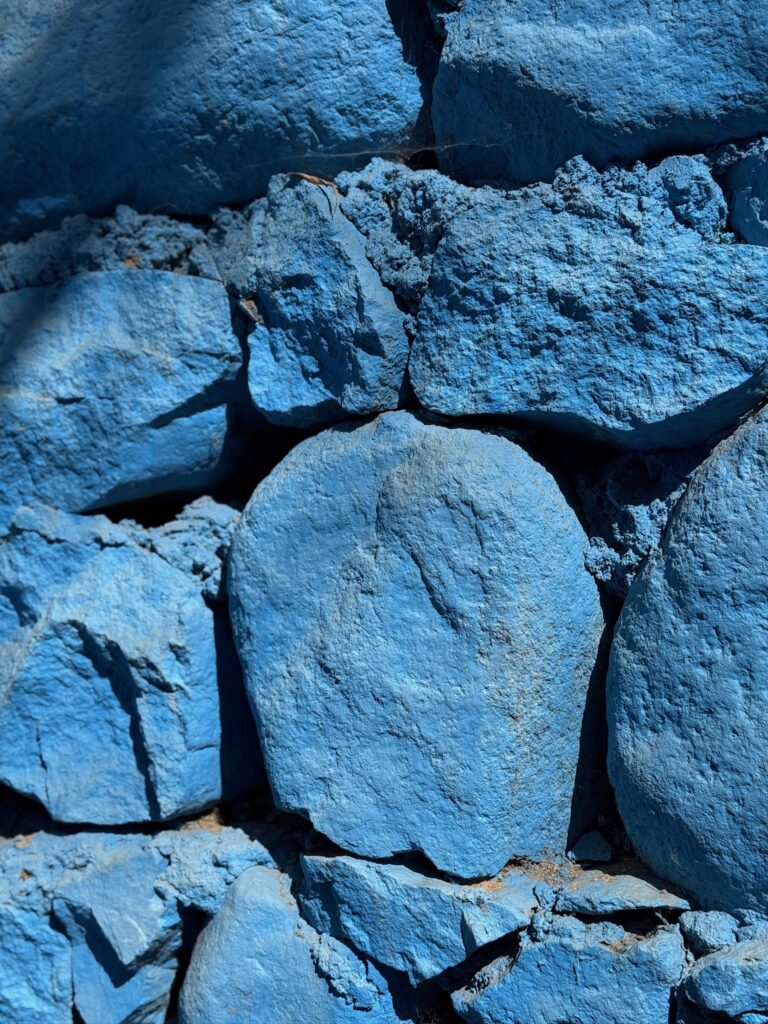
Throughout this area you get glimpses of some of the snow-capped highest peaks of the Atlas Mountains in the background.
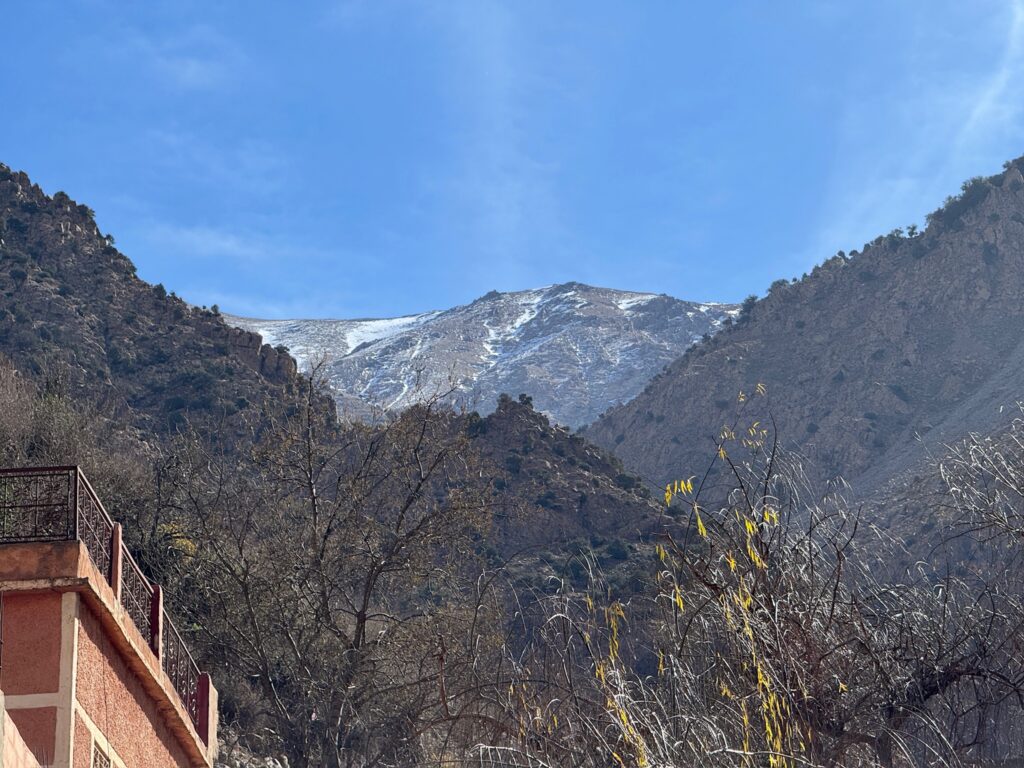
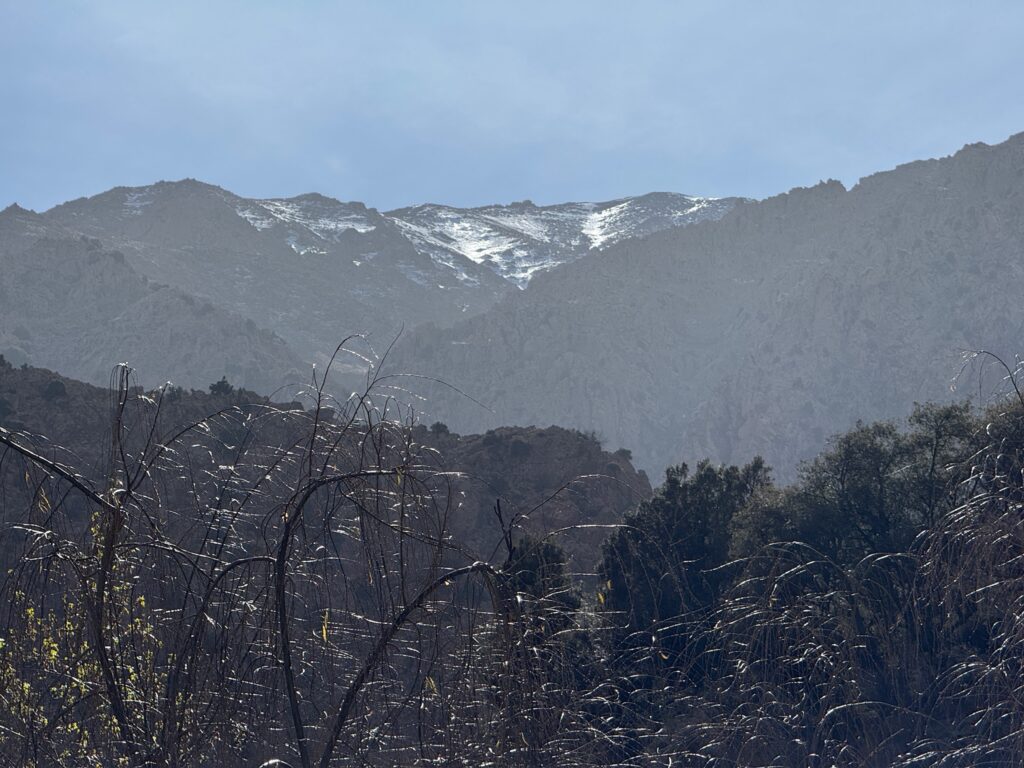

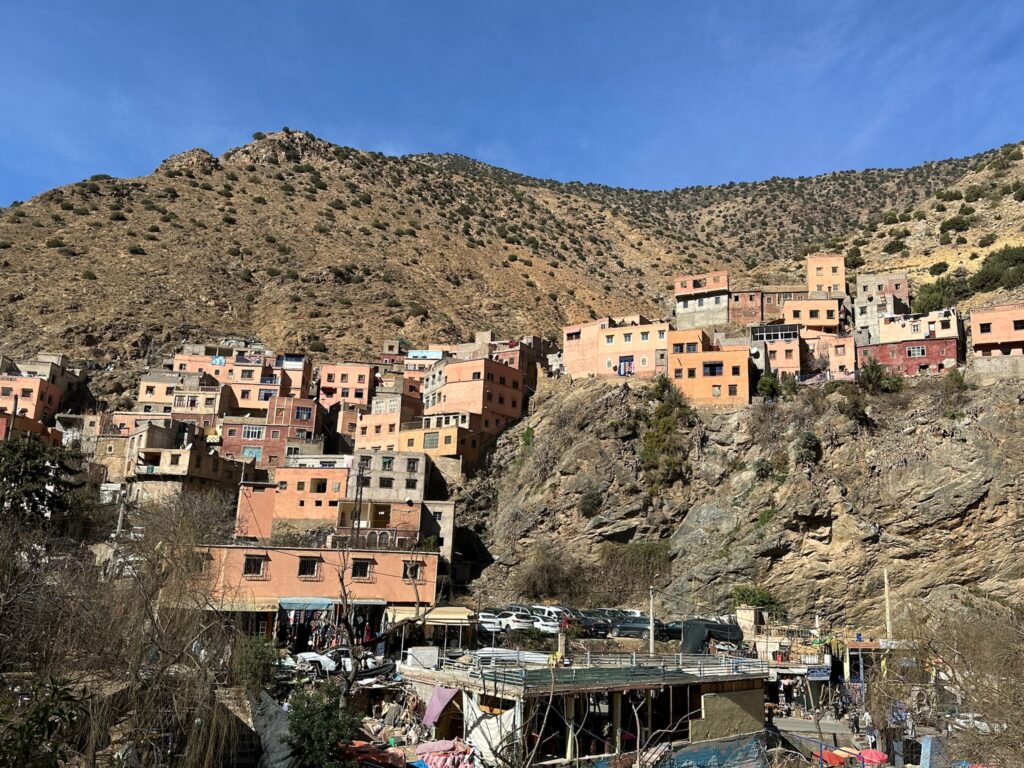
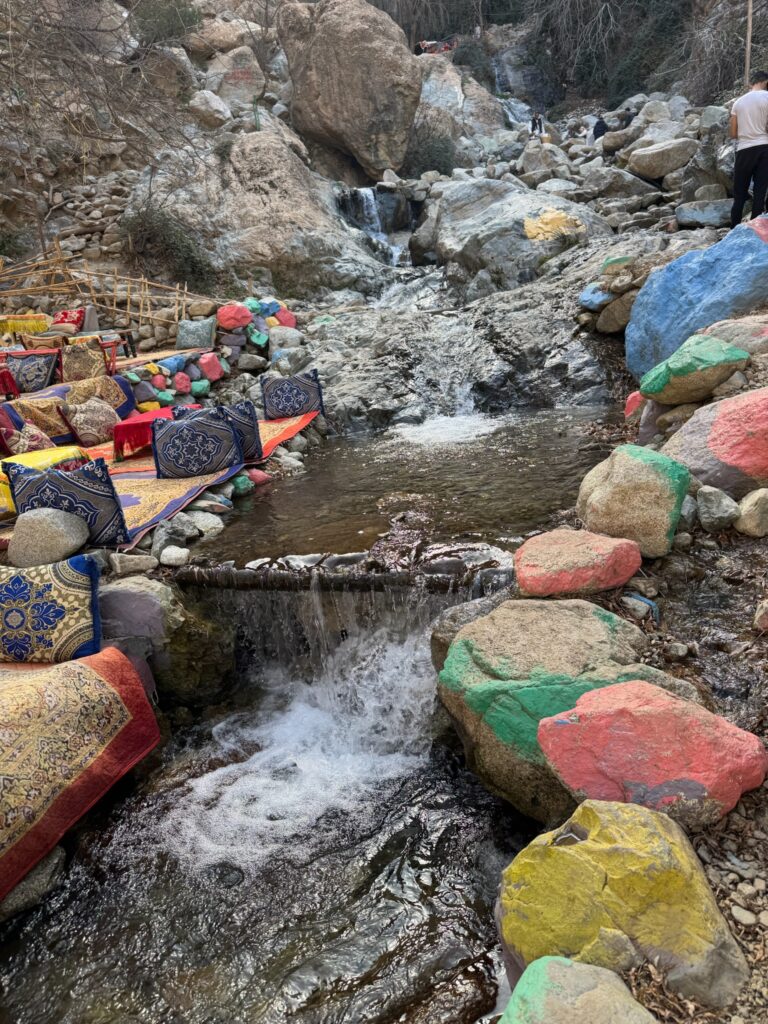

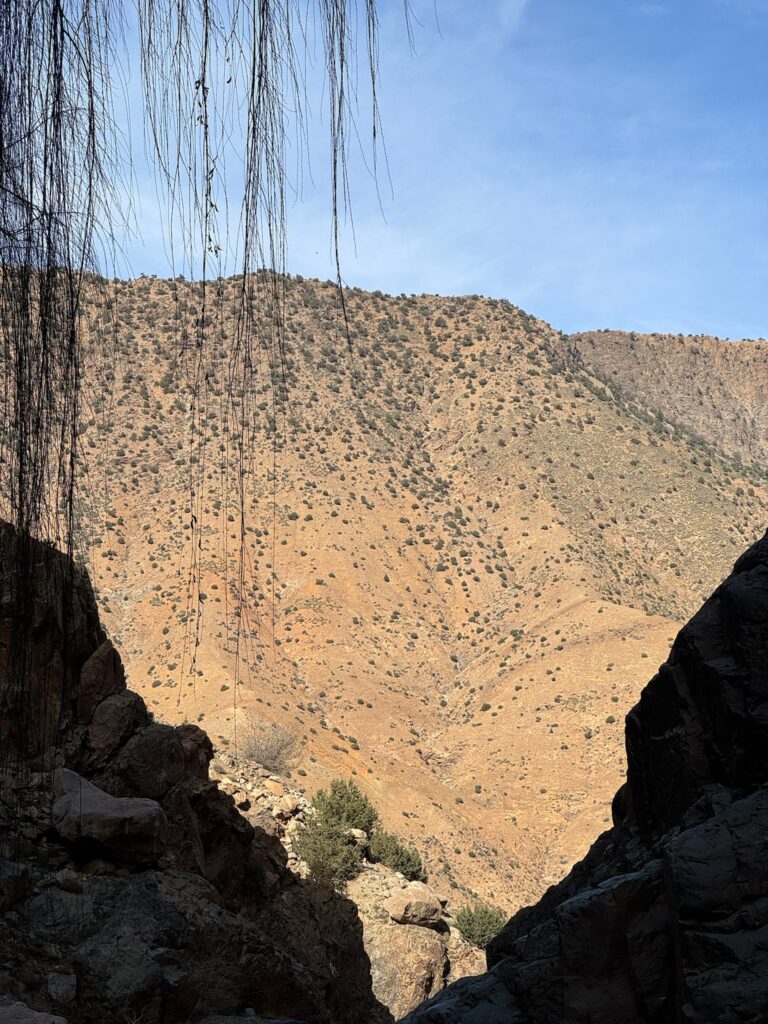
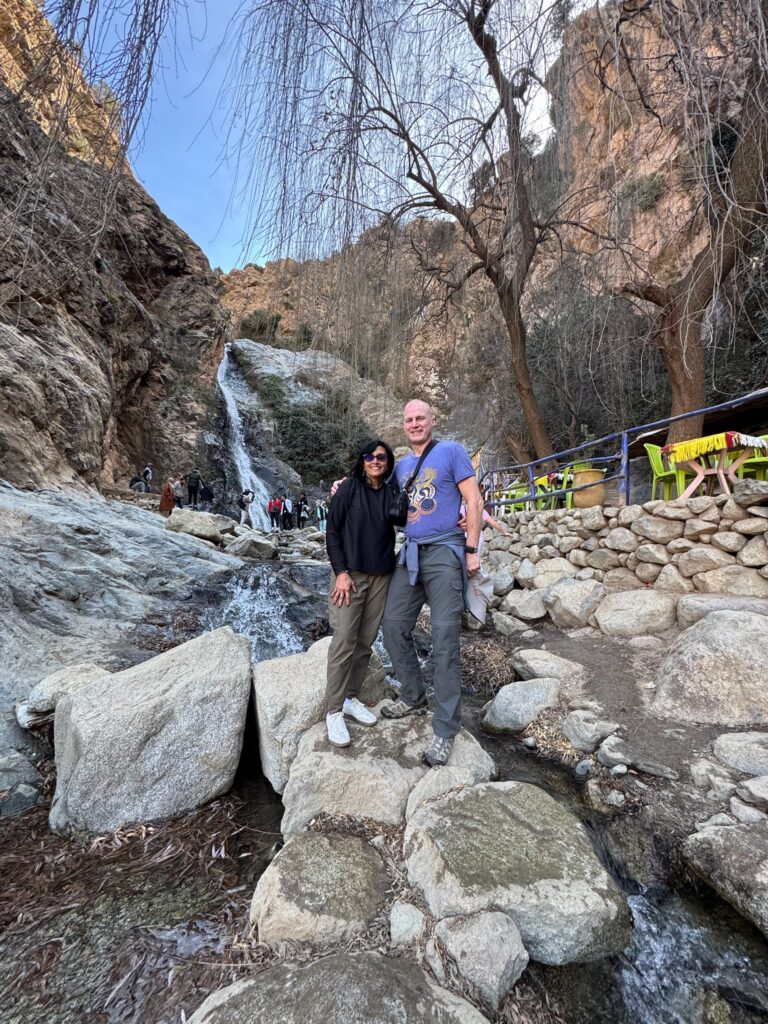

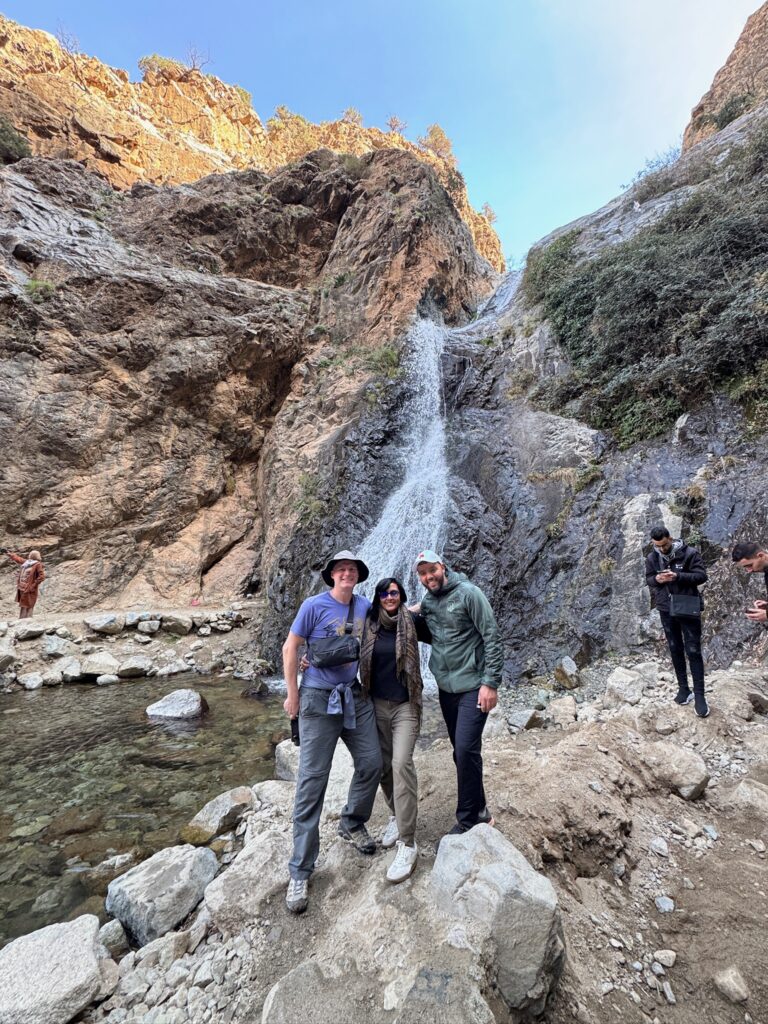
There were several of these faux shrines along the trail. Apparently a popular thing to do among certain cultures is to stage a fake wedding and get all dressed up and take pictures.
Once we were back in town we looked for a lunch place. The village spans the Ourika river and there are numerous small pedestrian bridges crossing it.
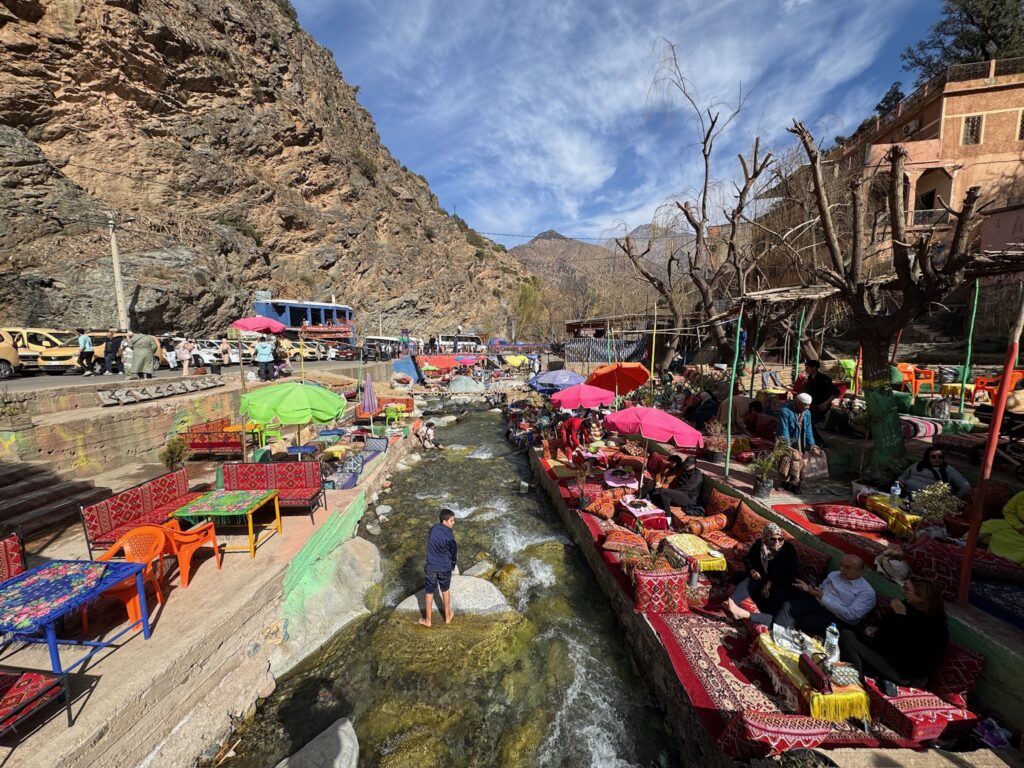
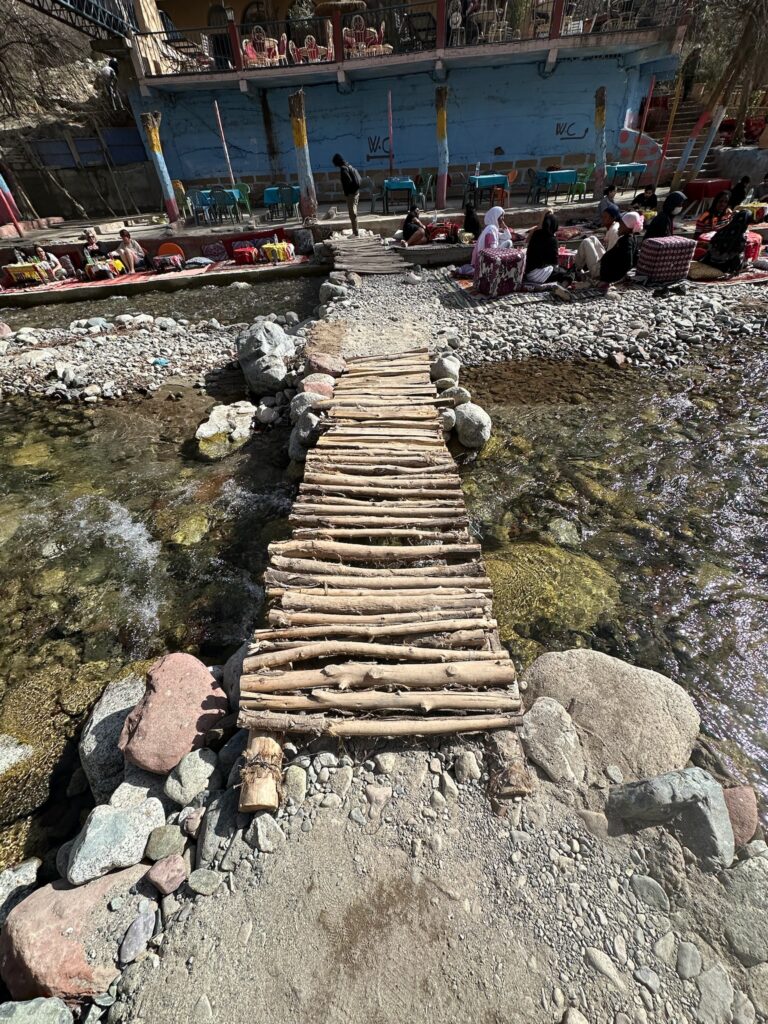
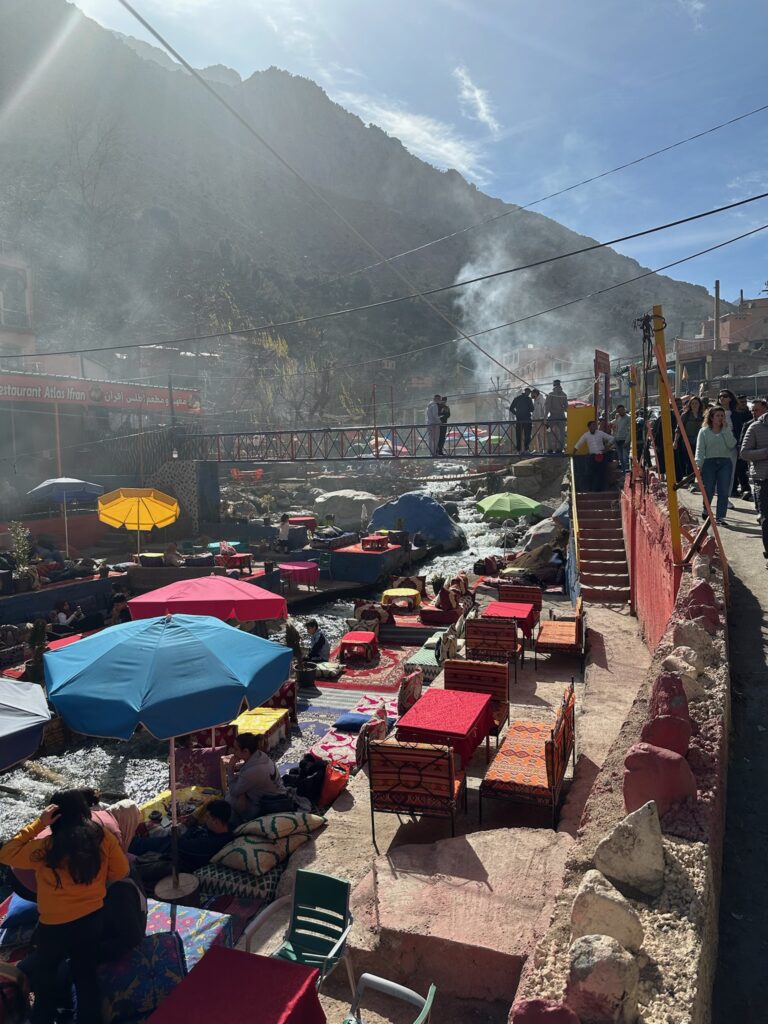
We ate on cushions in the sun just above the river. It was an idyllic setting in many ways, although some hornets decided to join (attracted to soda?). The food was basic but pretty good.
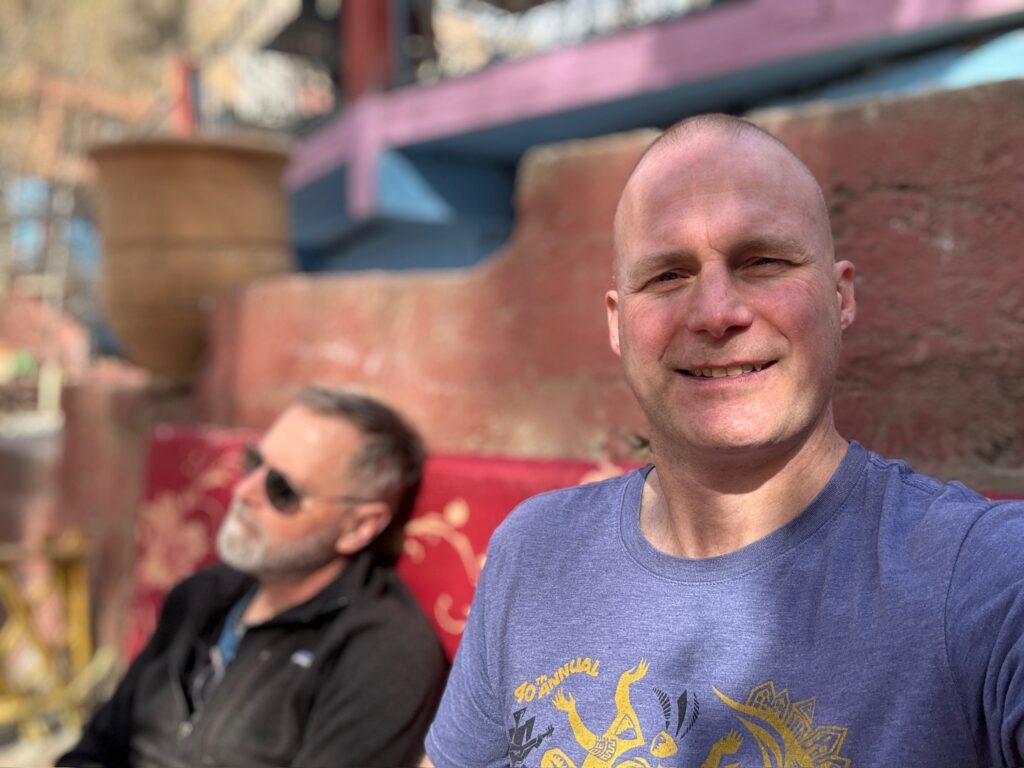
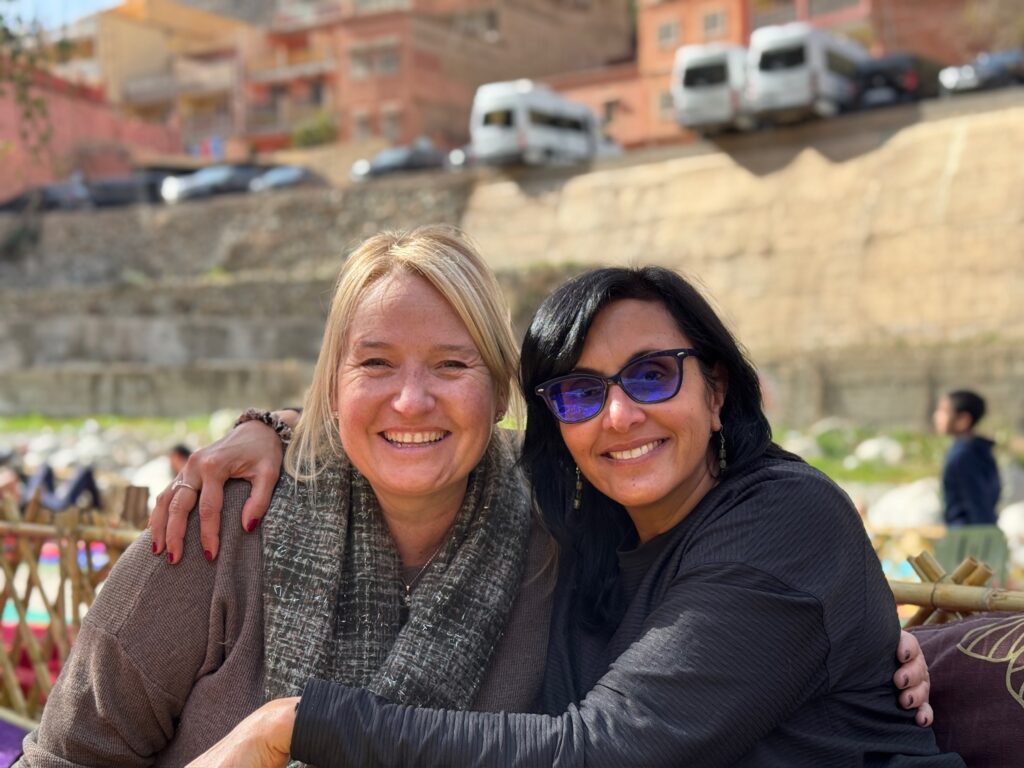

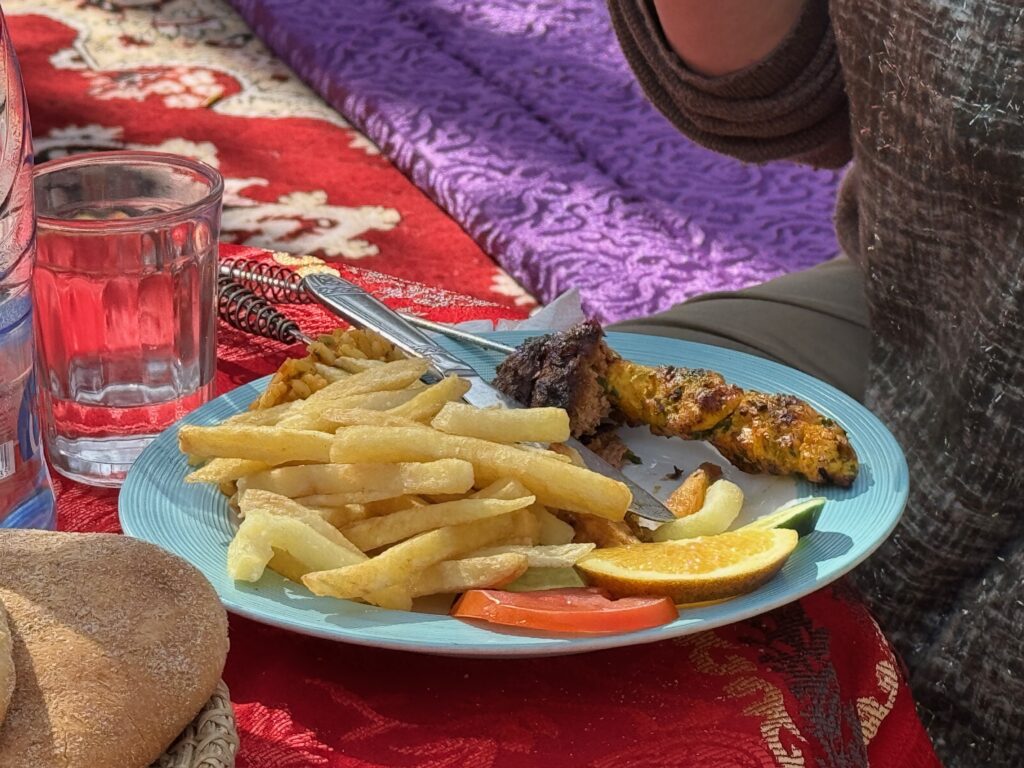
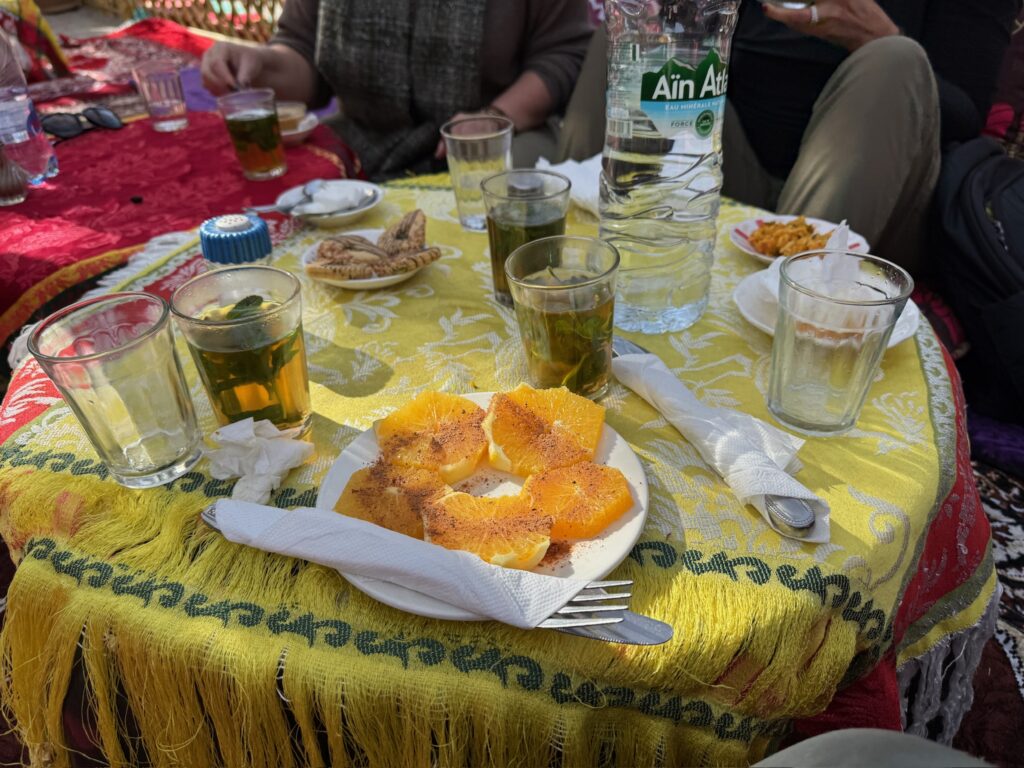
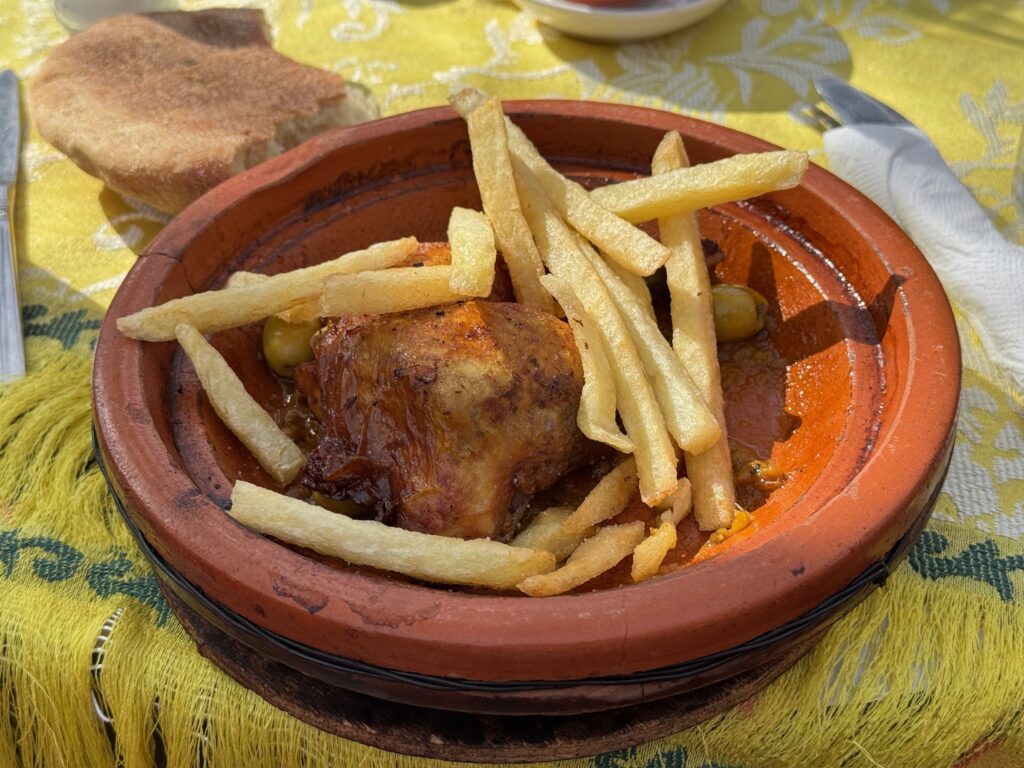
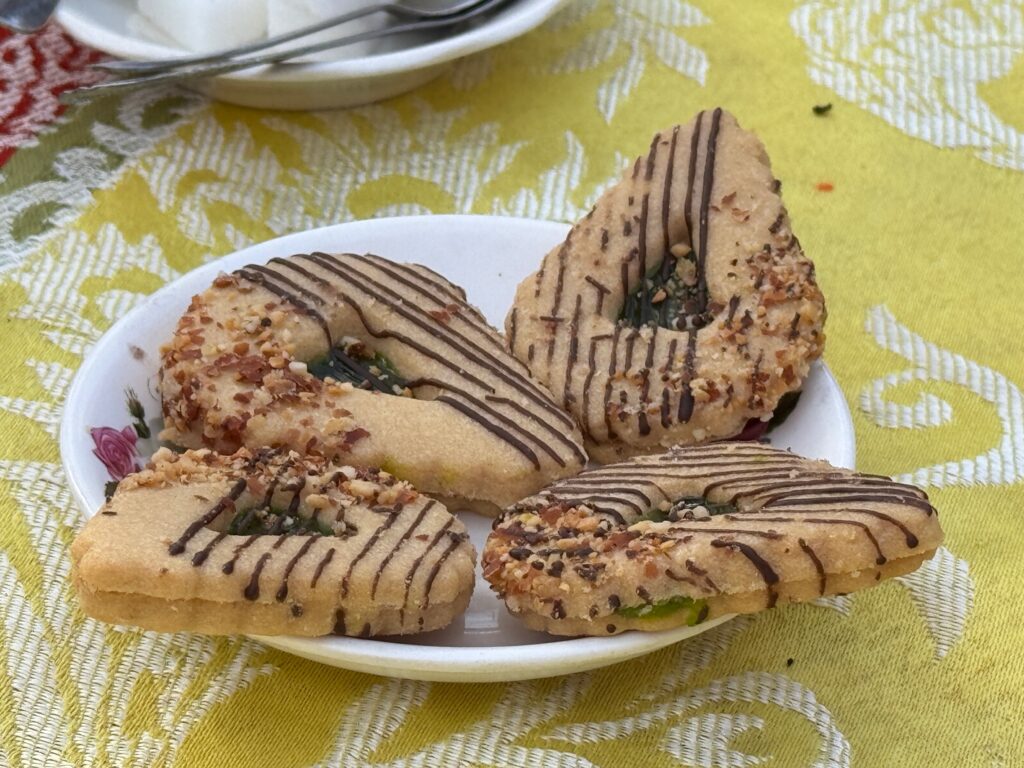
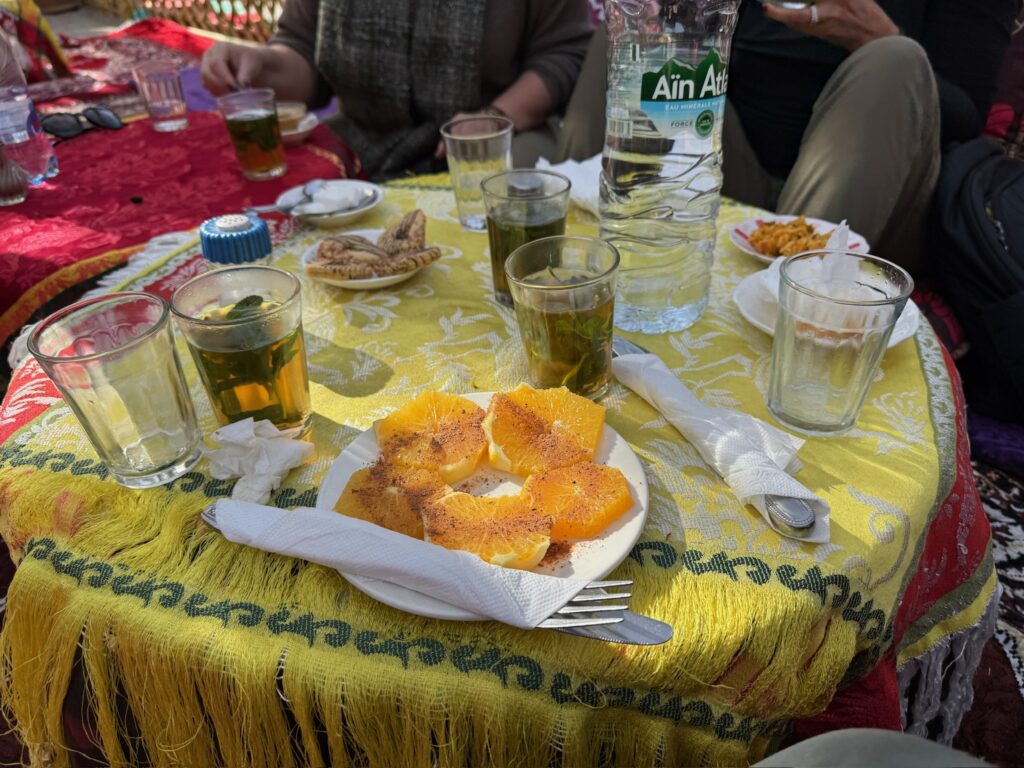
After eating we turned back toward Marrakech. On the way back we stopped at a traditional Amazigh home open for tours to see how they live. The man who guided us through was very nice and said it was his family’s house. It seemed staged and had a big gift shop in it so I don’t know how legitimate any of it was, but we did learn a bit about their agricultural life and sense of community.
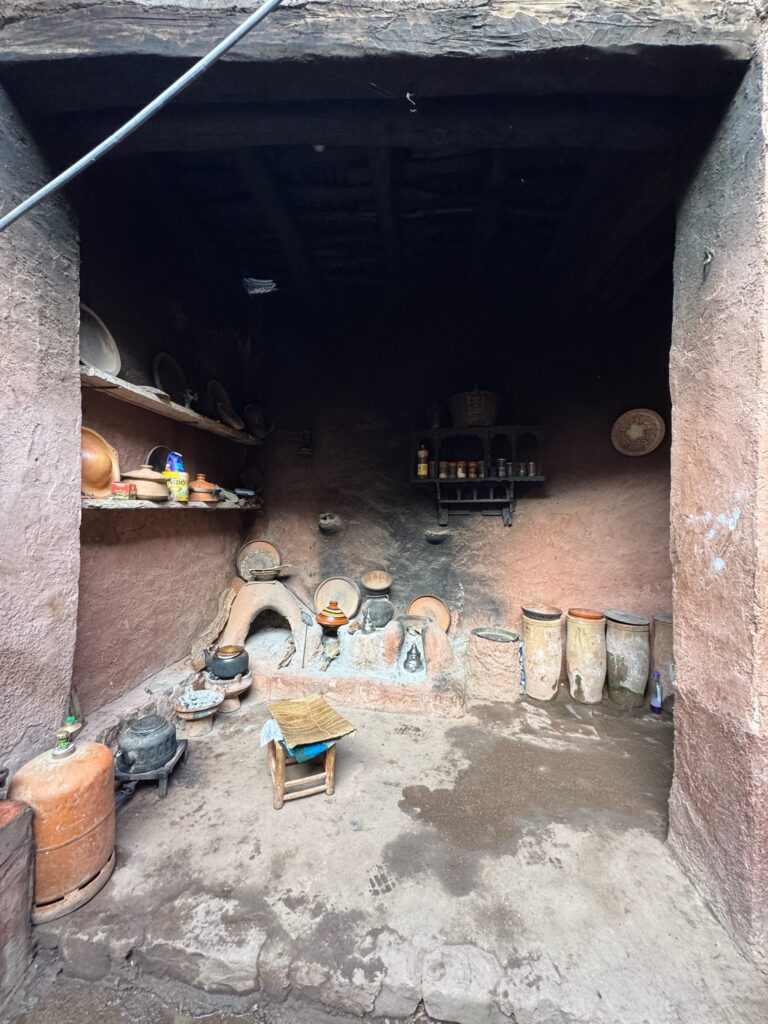
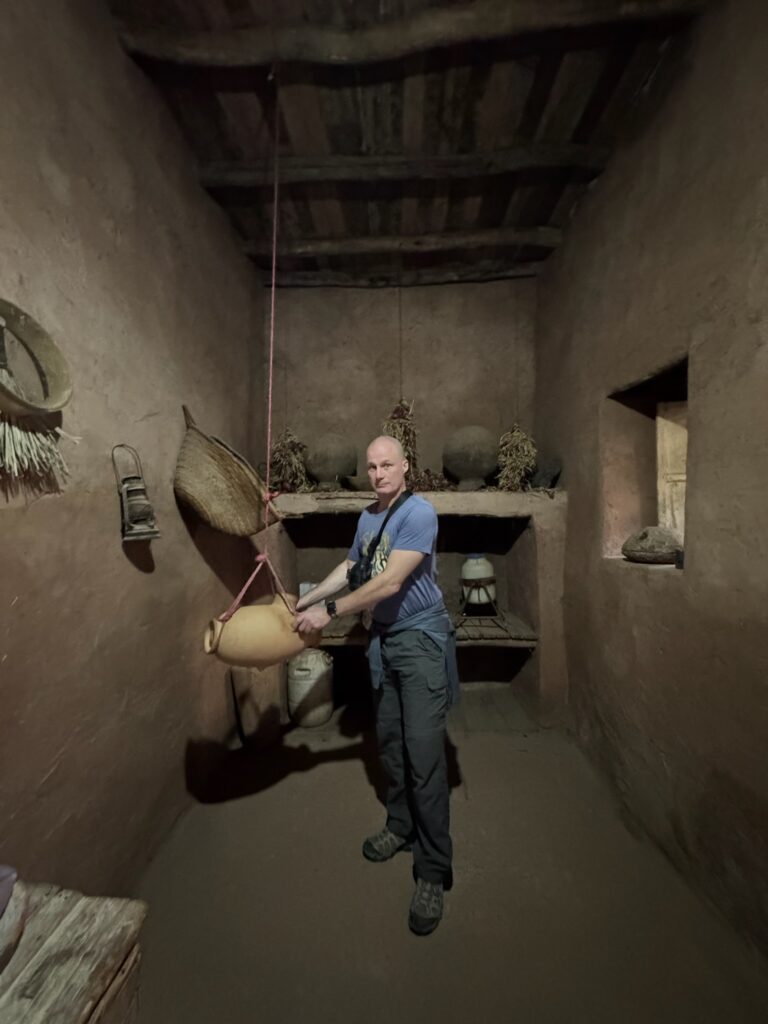
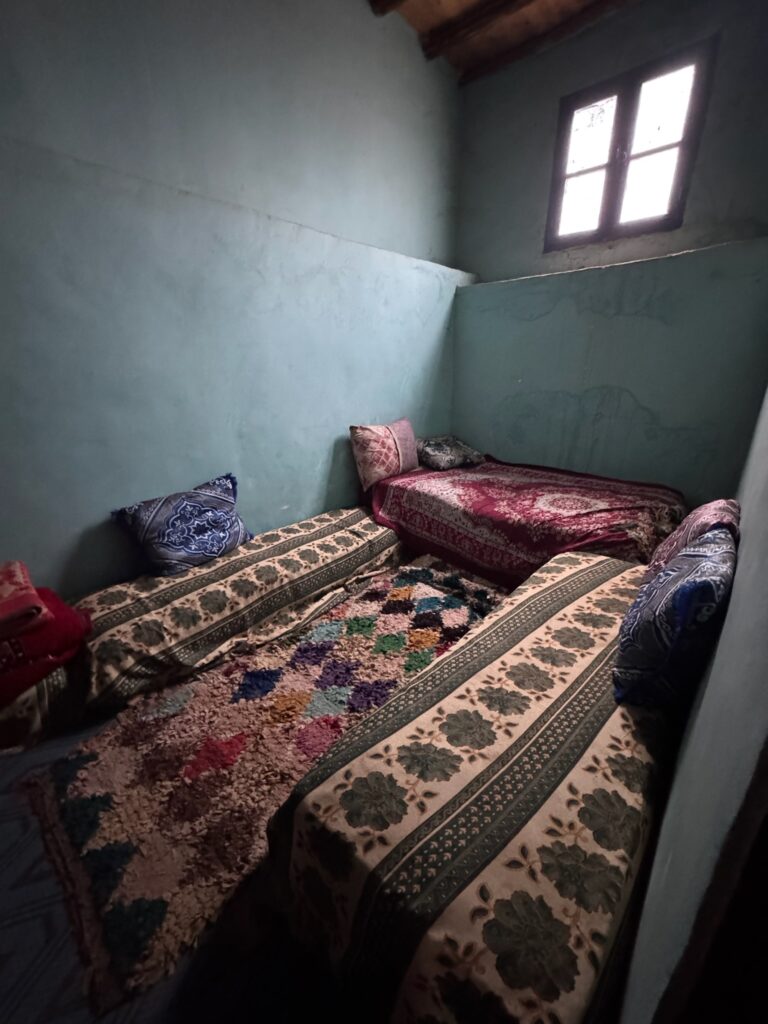

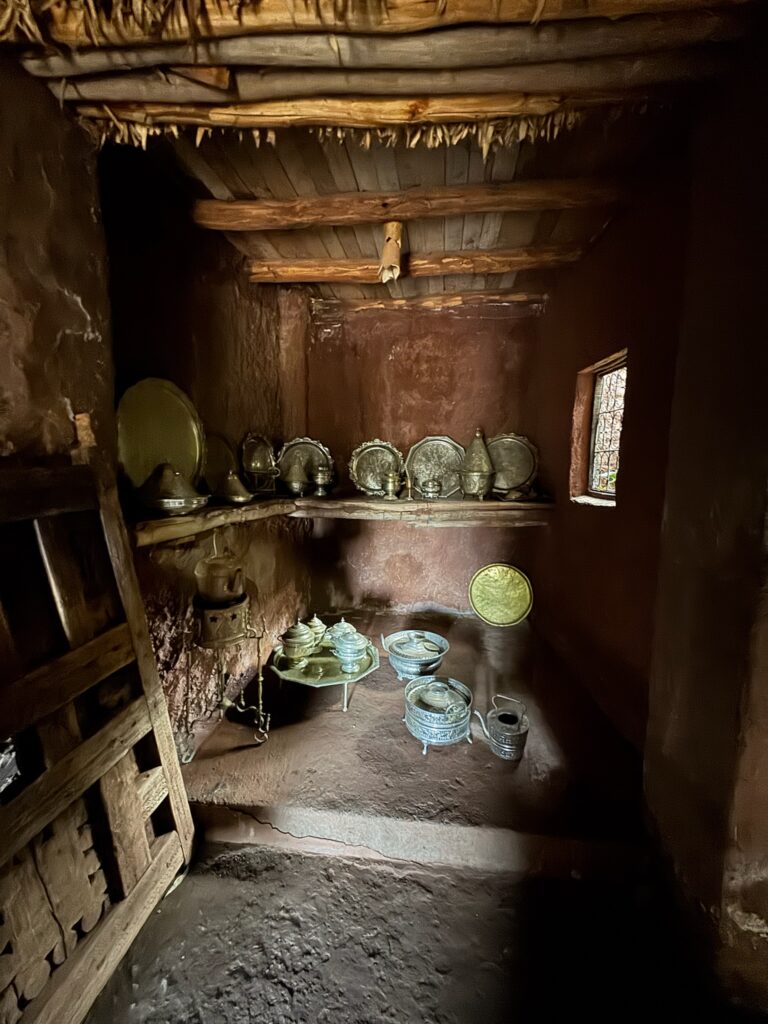
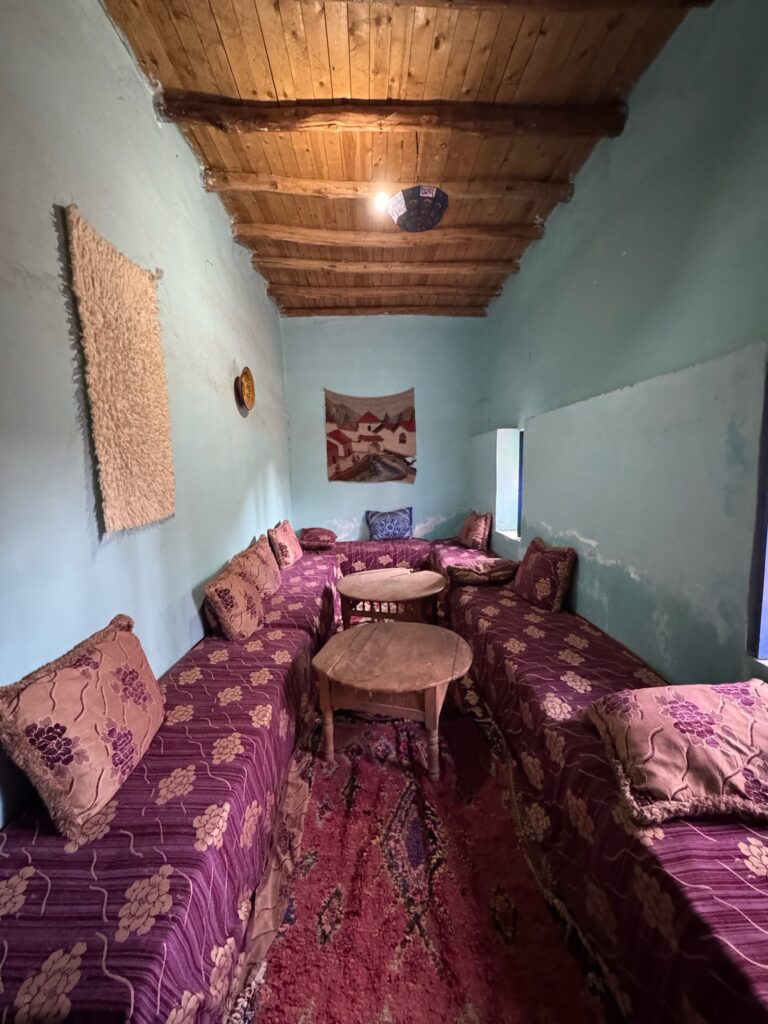
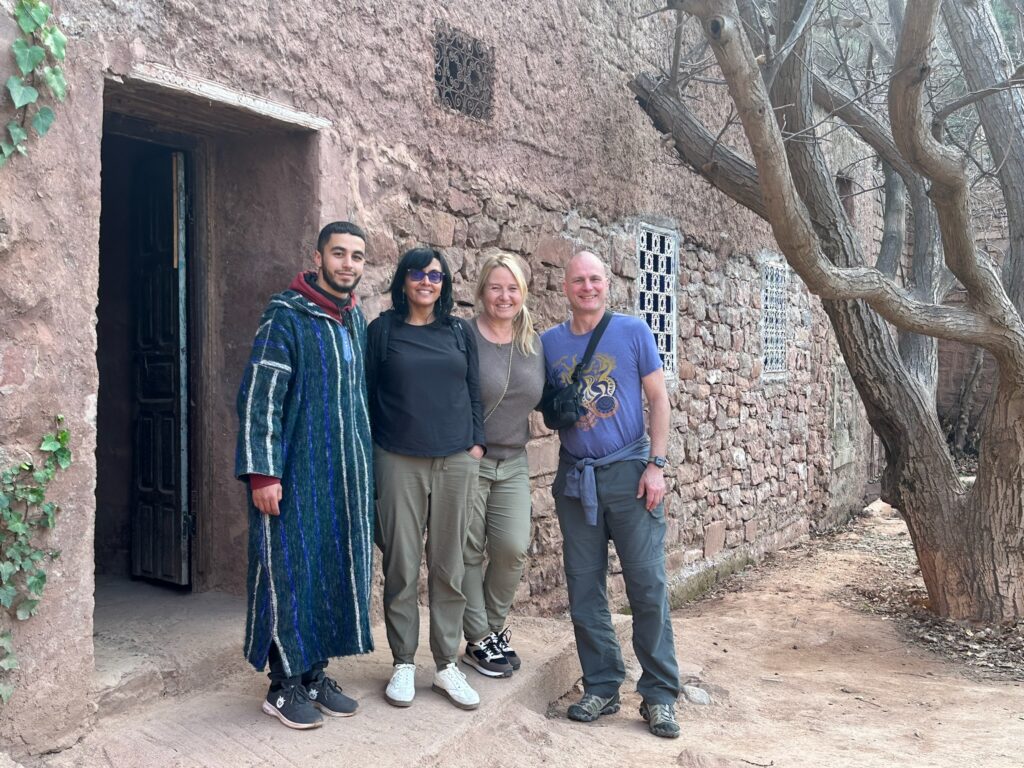
We headed back in earnest at this point. Raida dropped us off along the southern edge of the Medina and we walked back to our riad. We discovered that it has a beautiful rooftop lounge area! We also met Sonia, the owner. She and her husband Drago (who we’ve been communicating with) are from Slovenia and are delightful.
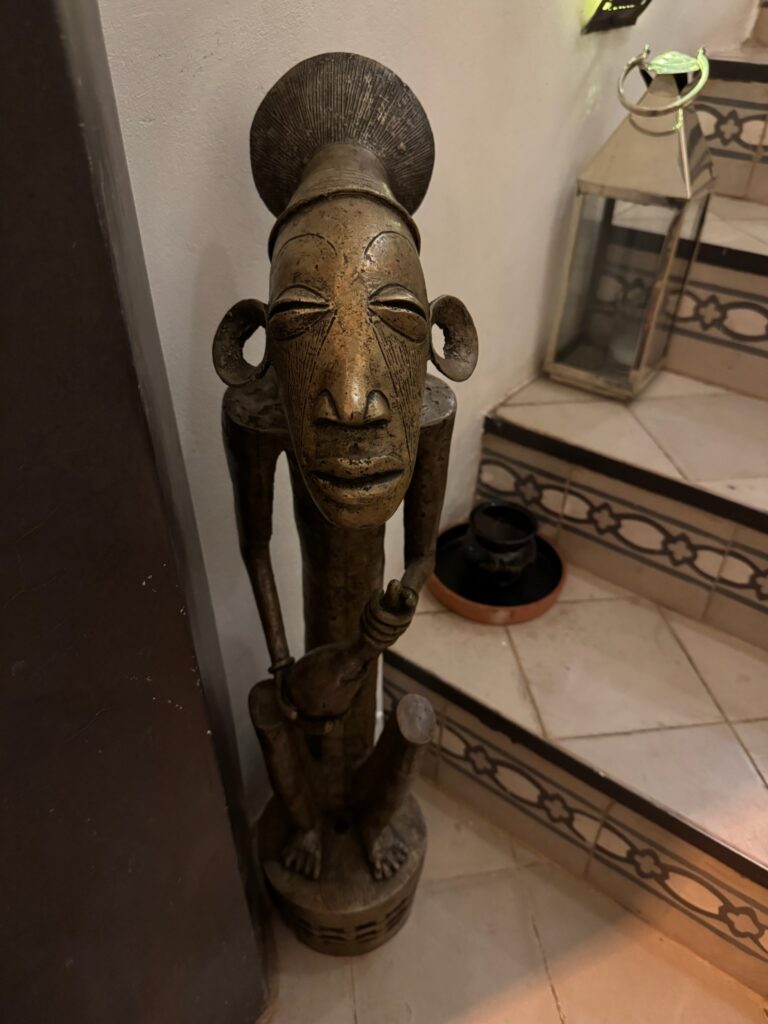
We rested for a bit then walked out to a restaurant recommended by the riad, Marrakchia. It’s a cute little place, but since they were packed on the top floor we sat downstairs. That would have been great except a large group including several young children joined soon after we settled and were comically loud. We’ve been there so we endured.
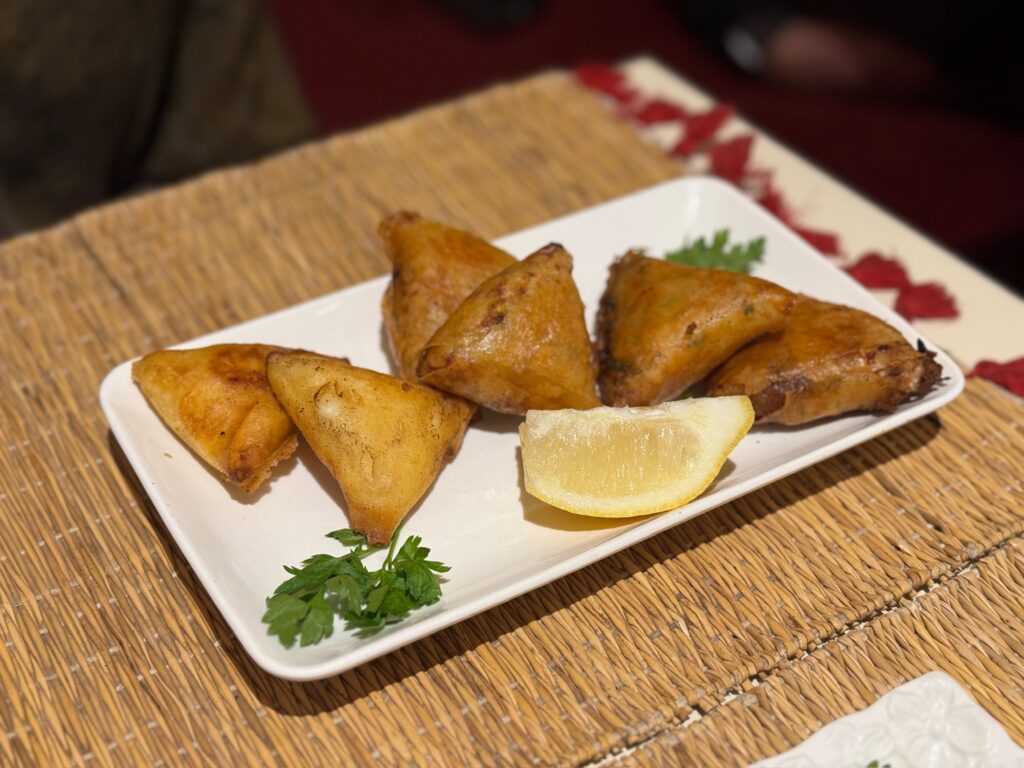
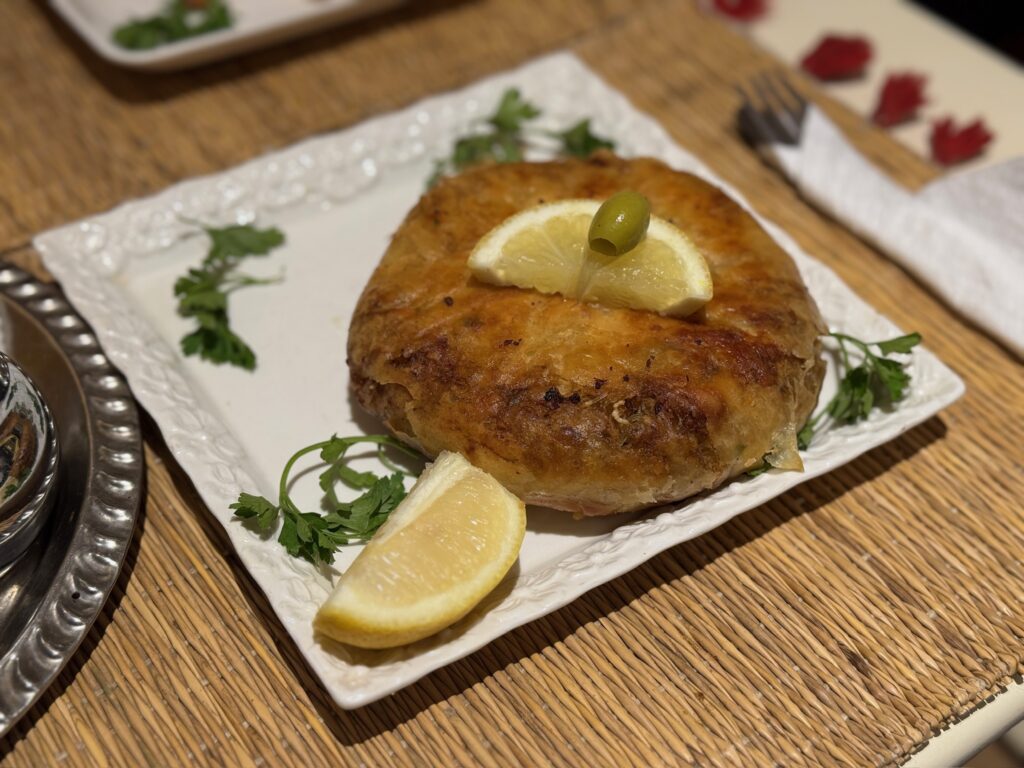
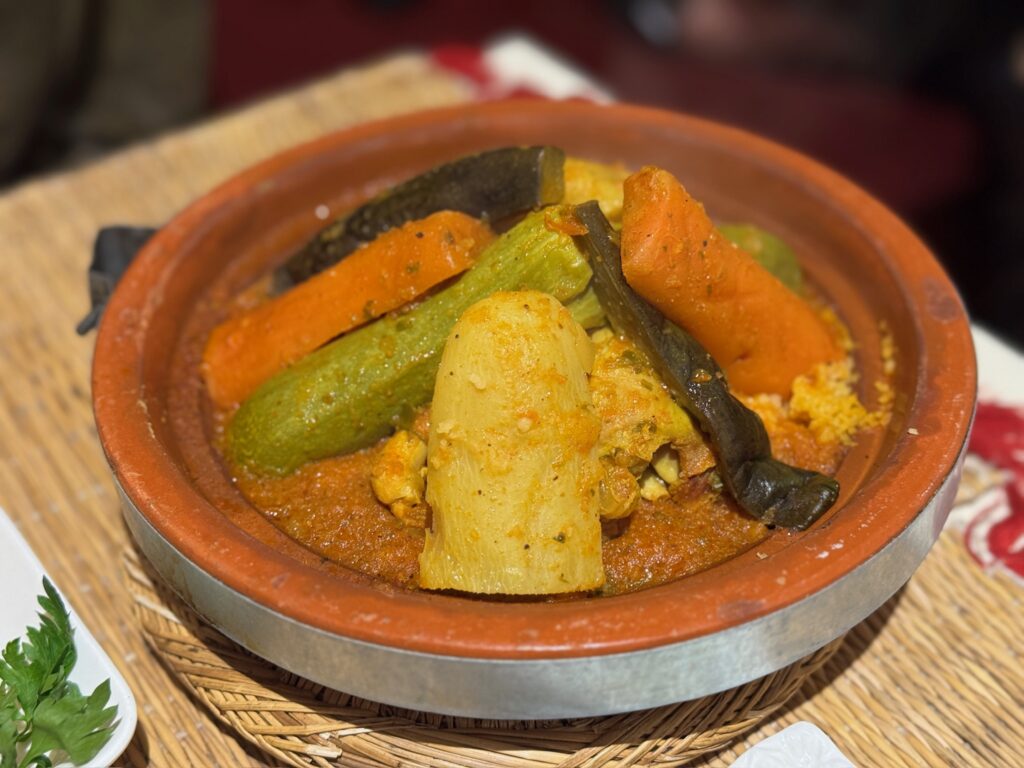
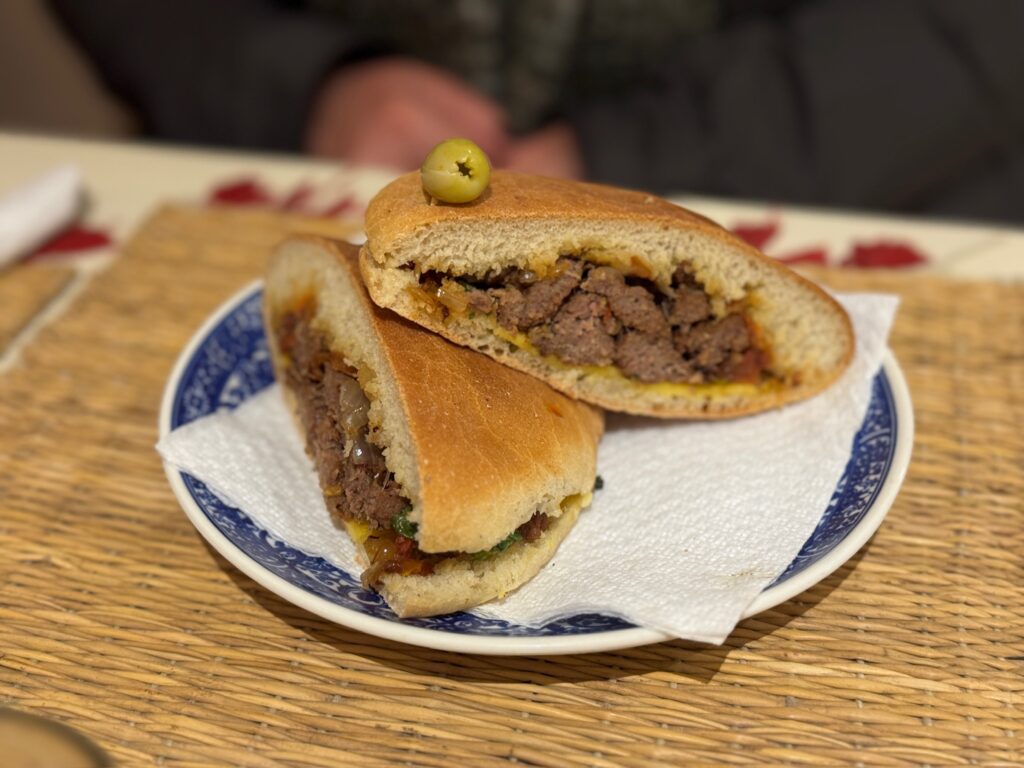
We had our deepest laugh of the day trying to take home left-overs and pay the bill. Our waitress was delightful and and great but we simply couldn’t find a language to converse with her. I can get by in French and Savitri is fluent in Spanish, but neither those nor English seemed to mean much to this younger woman. Perhaps she only spoke Arabic, but that’s unusual for younger people these days. Anyway we were all playing an awful game of charades and failing badly, but we finally managed to pay.
We returned to our riad. Here’s a shot of the portion of the alley our entrance comes off of (Derb el Hajama). It’s almost exactly 180cm high, and the doorway is smaller of course so getting in is amusingly Keebler-esque. The second image is from across from the derb, where rival cat gangs were selling smokes and not giving a shit what we did.
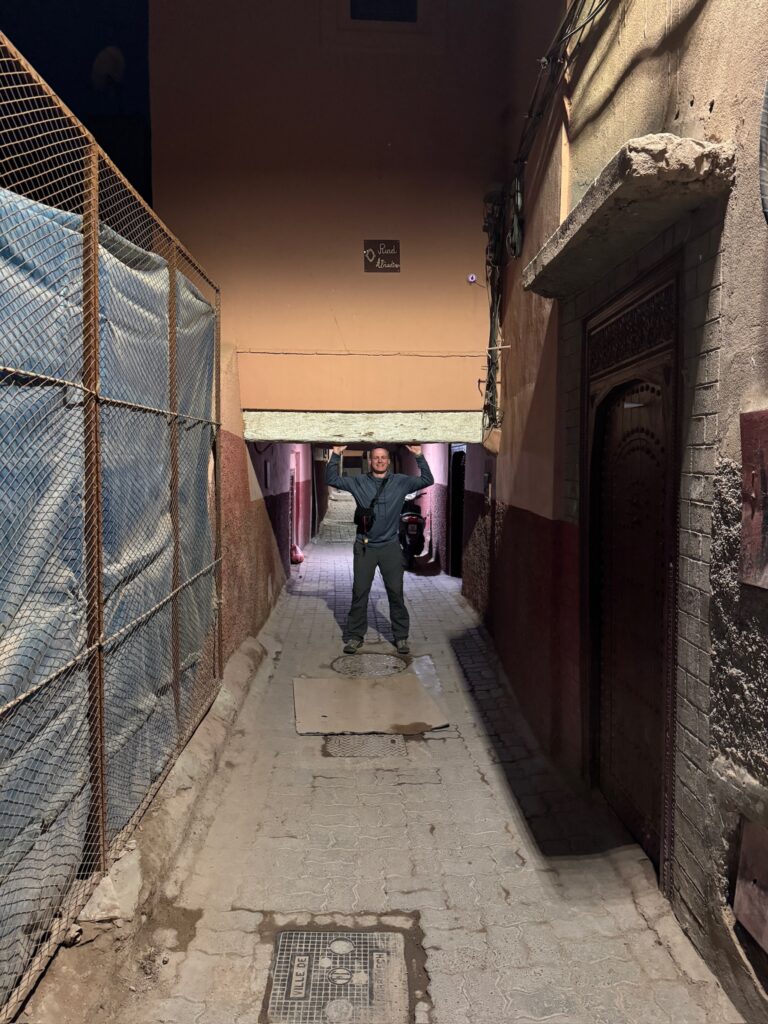
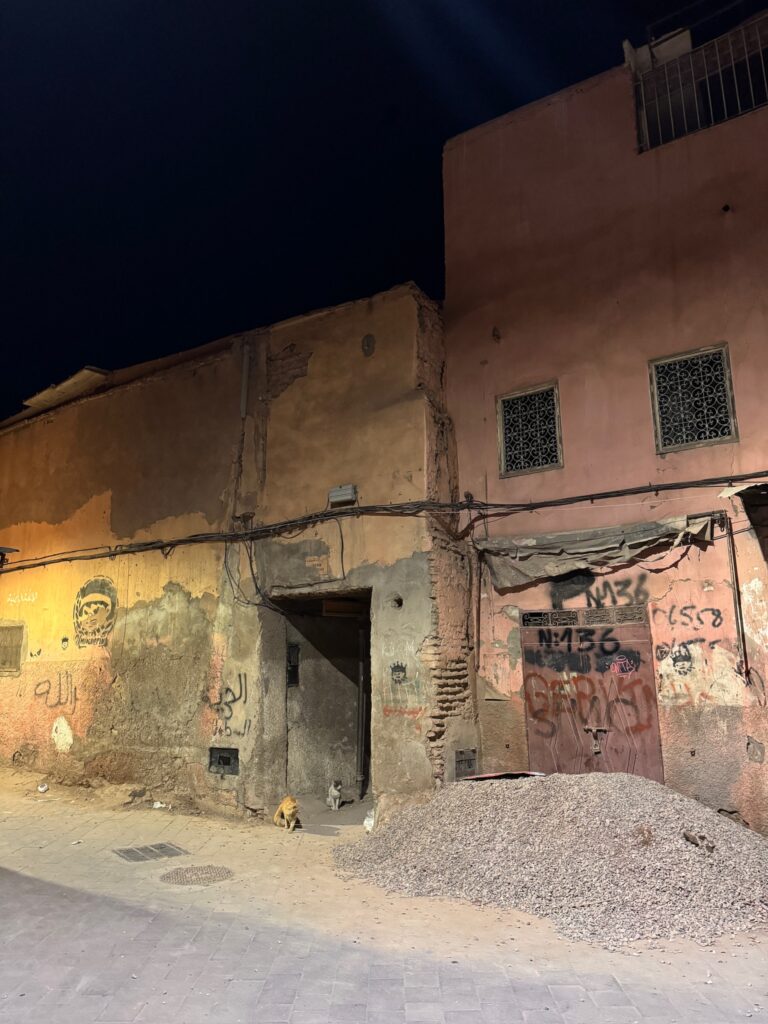
Good night Marrakech, tomorrow’s our last full day here and we plan to relax and browse the many shops in the souks.
Leave a Reply